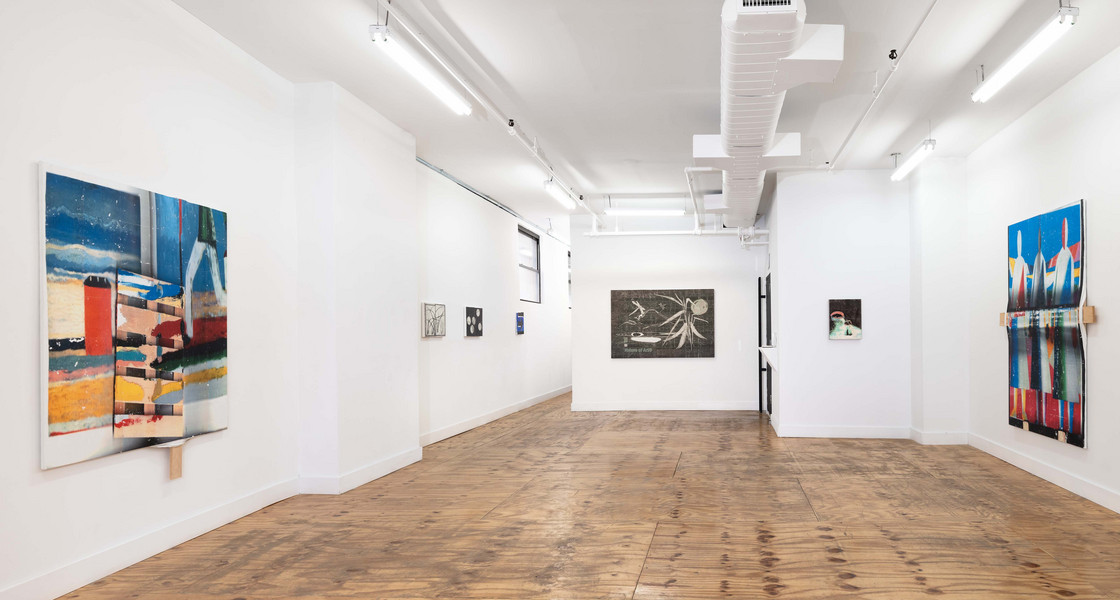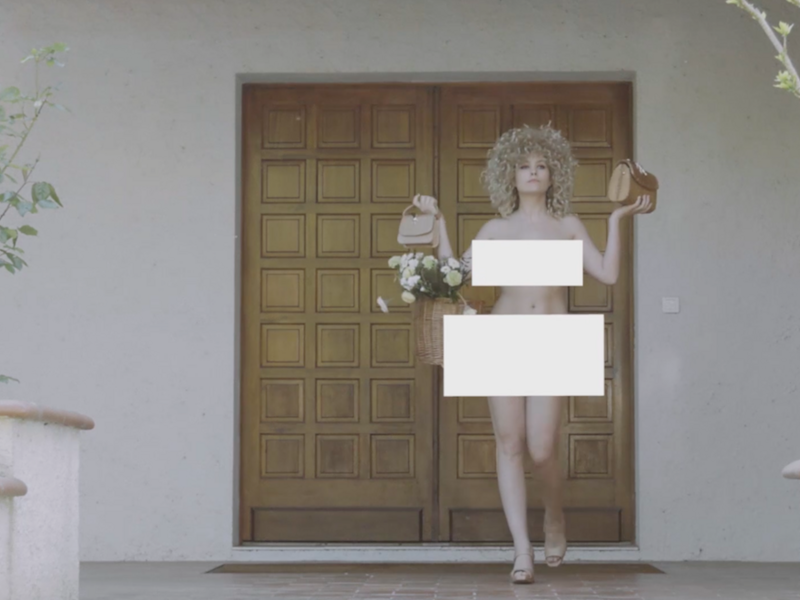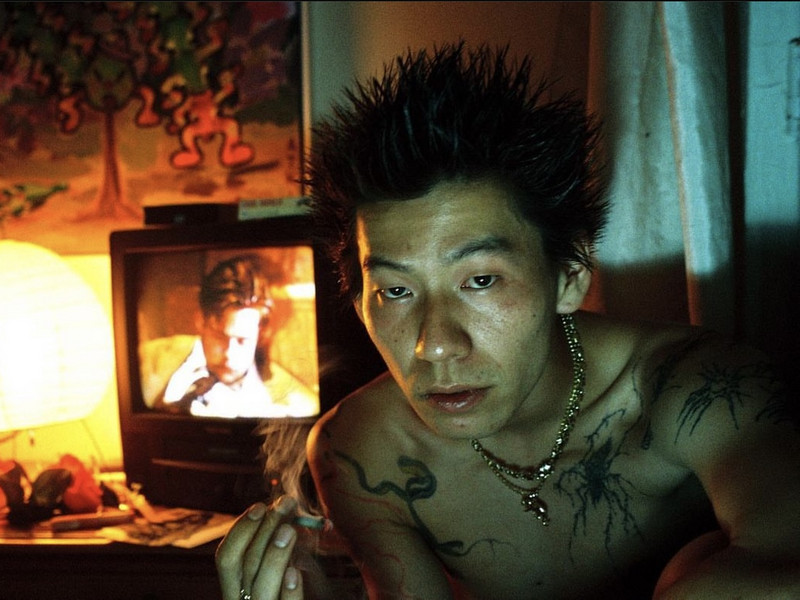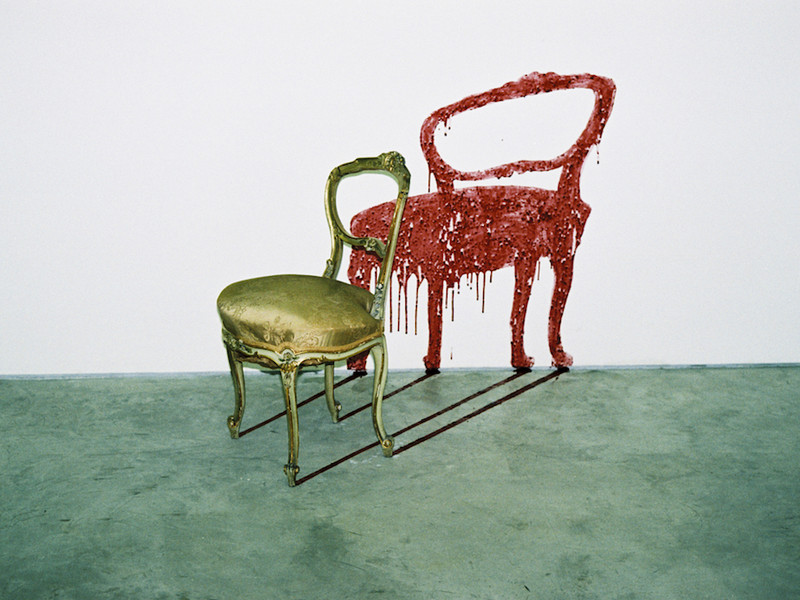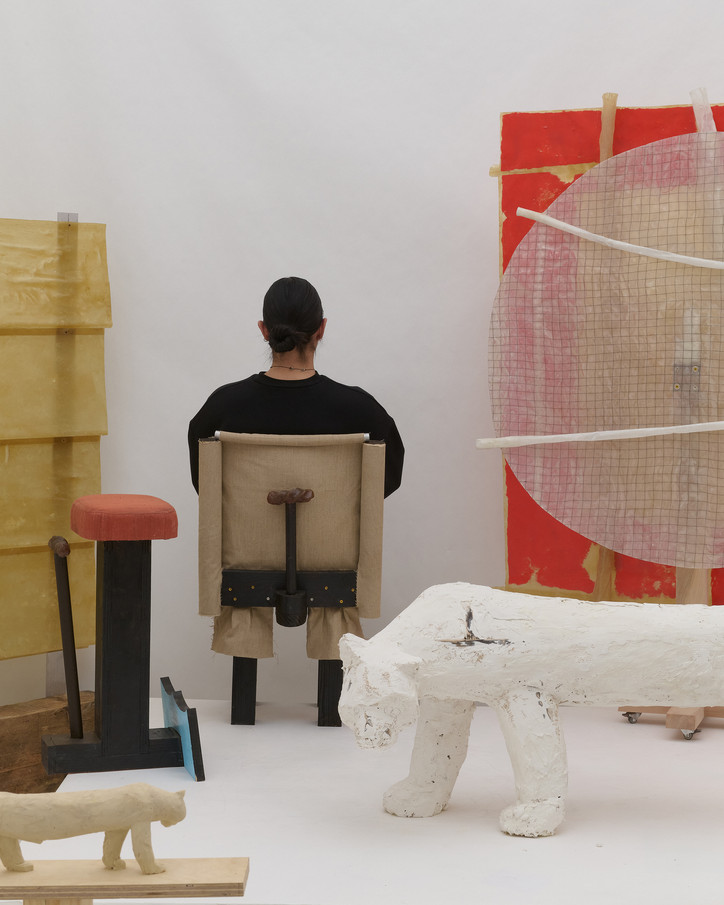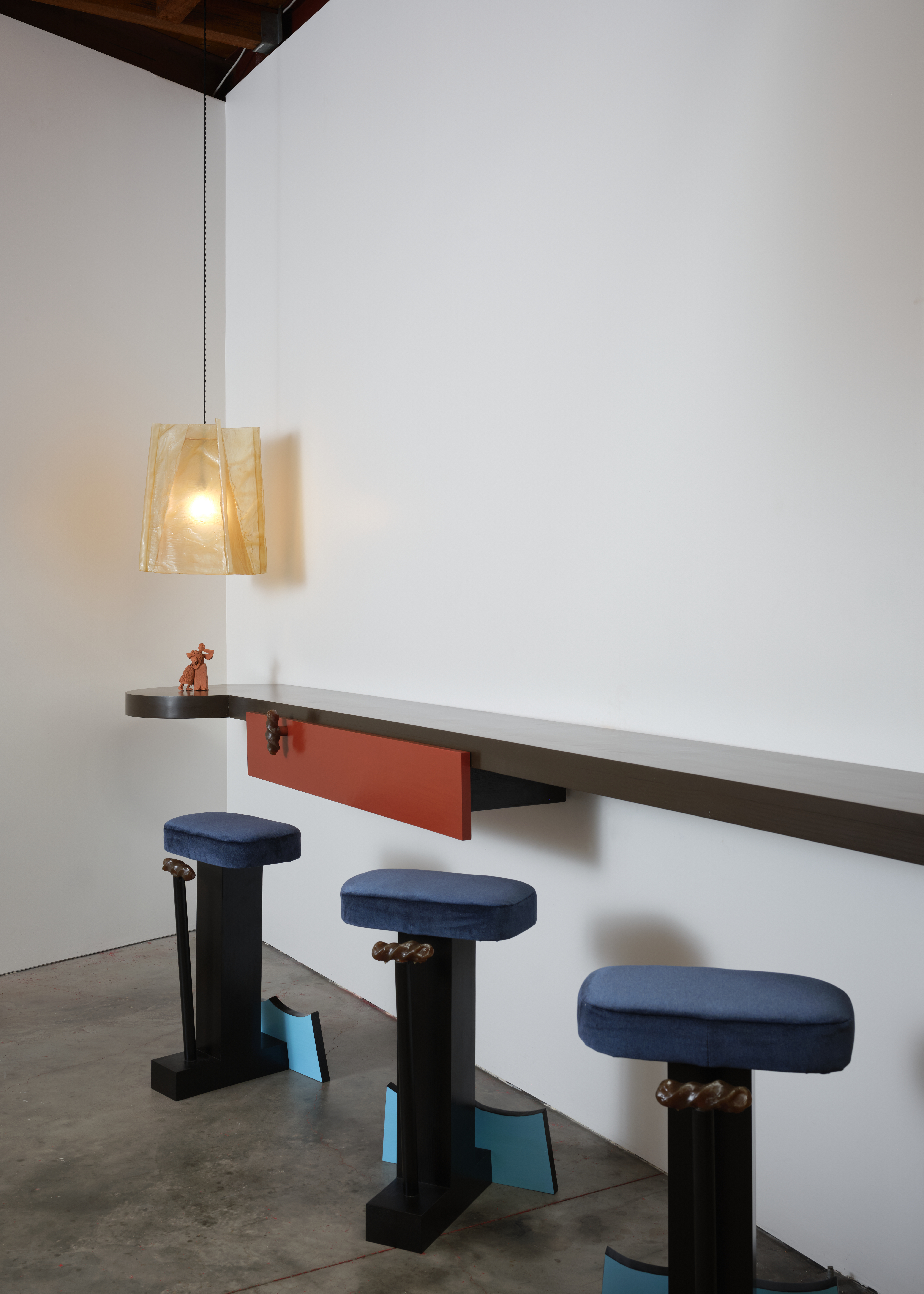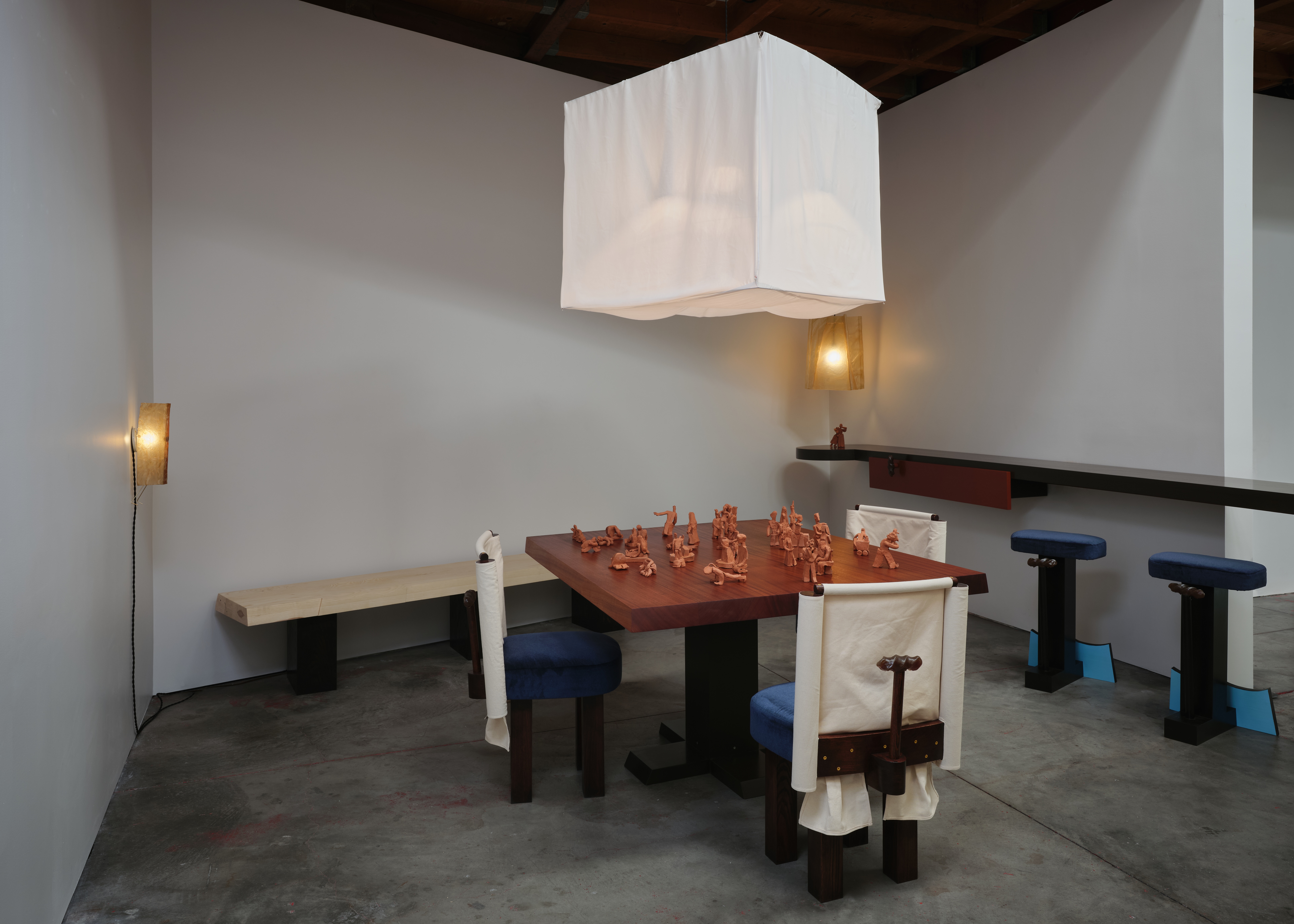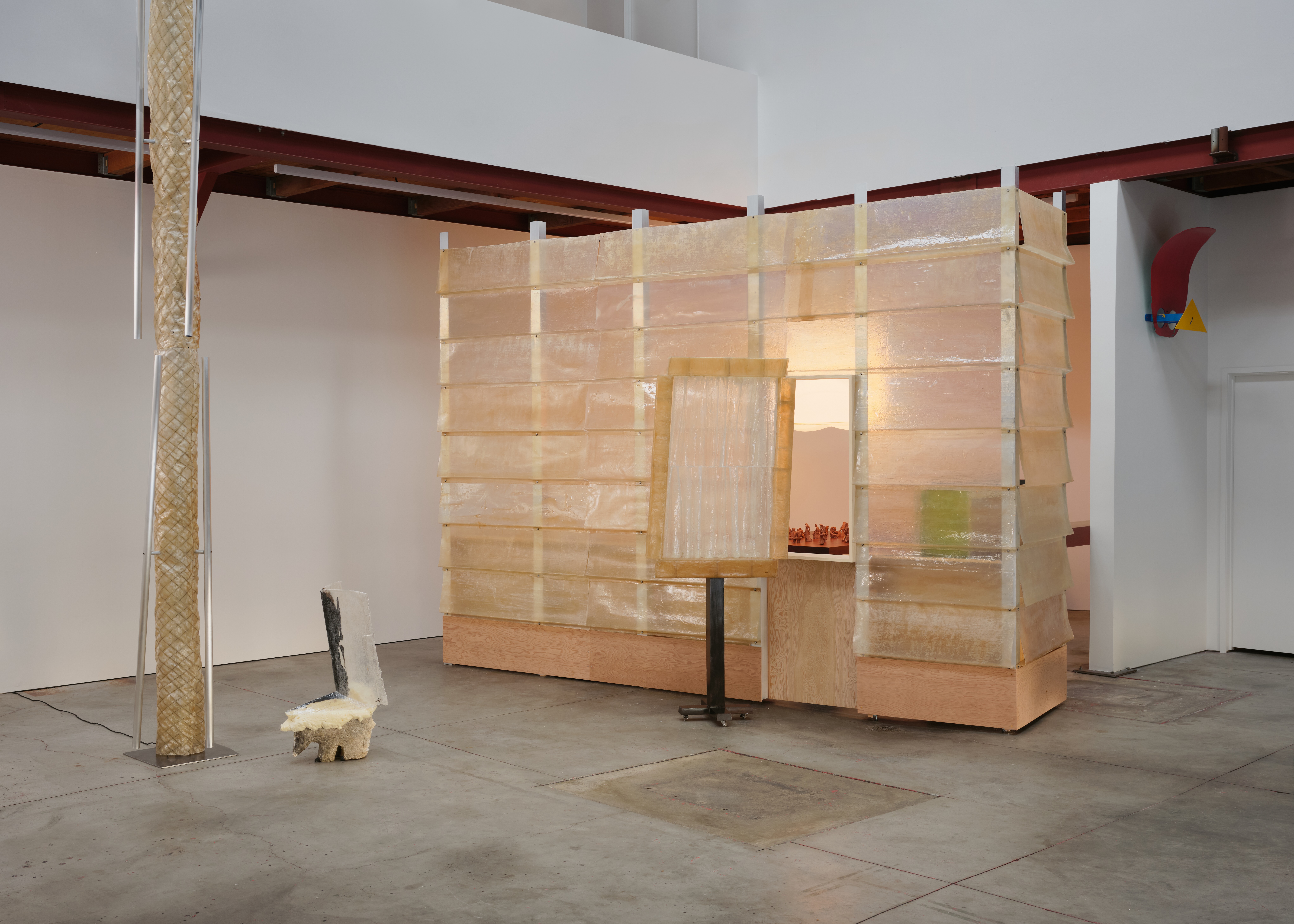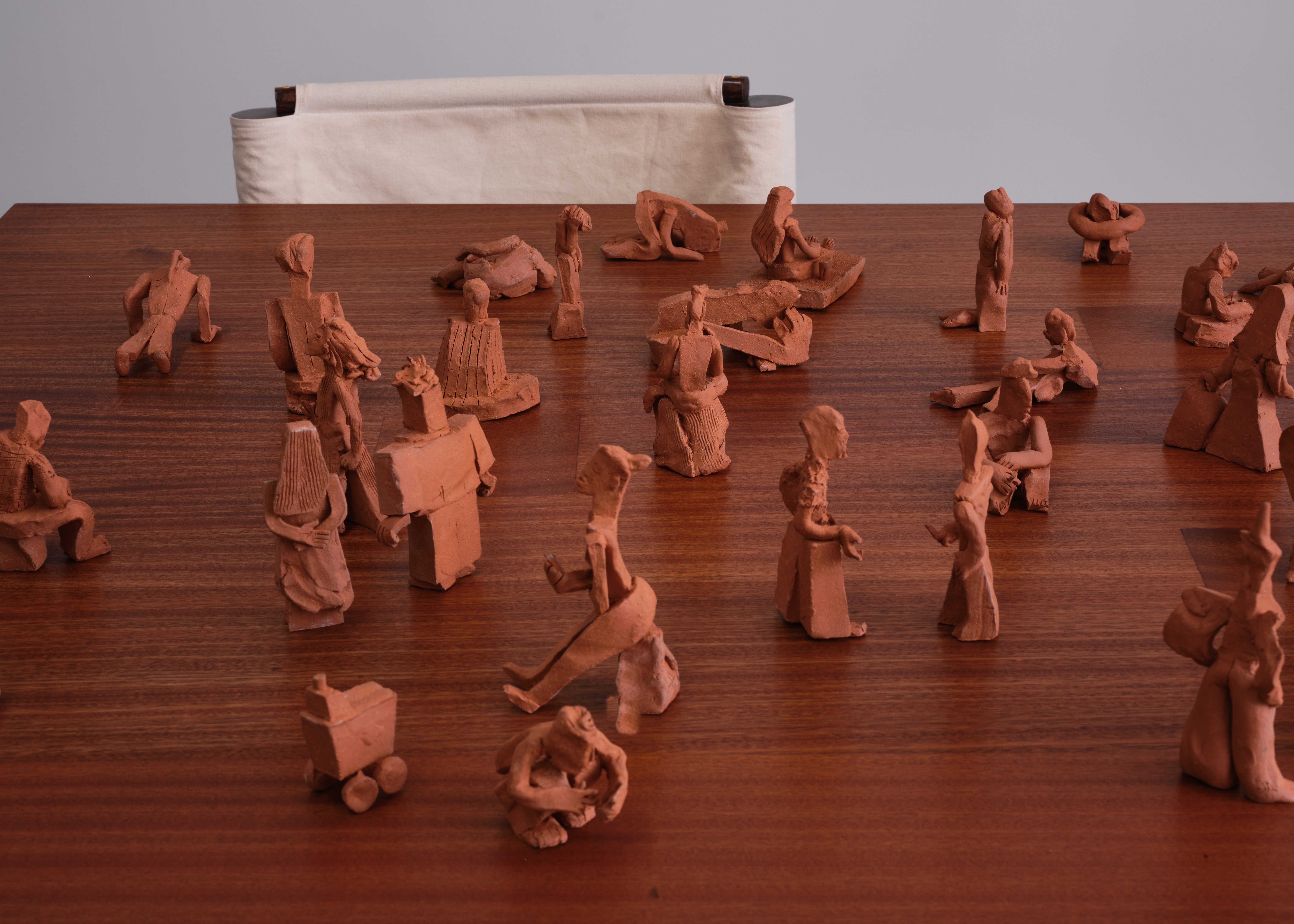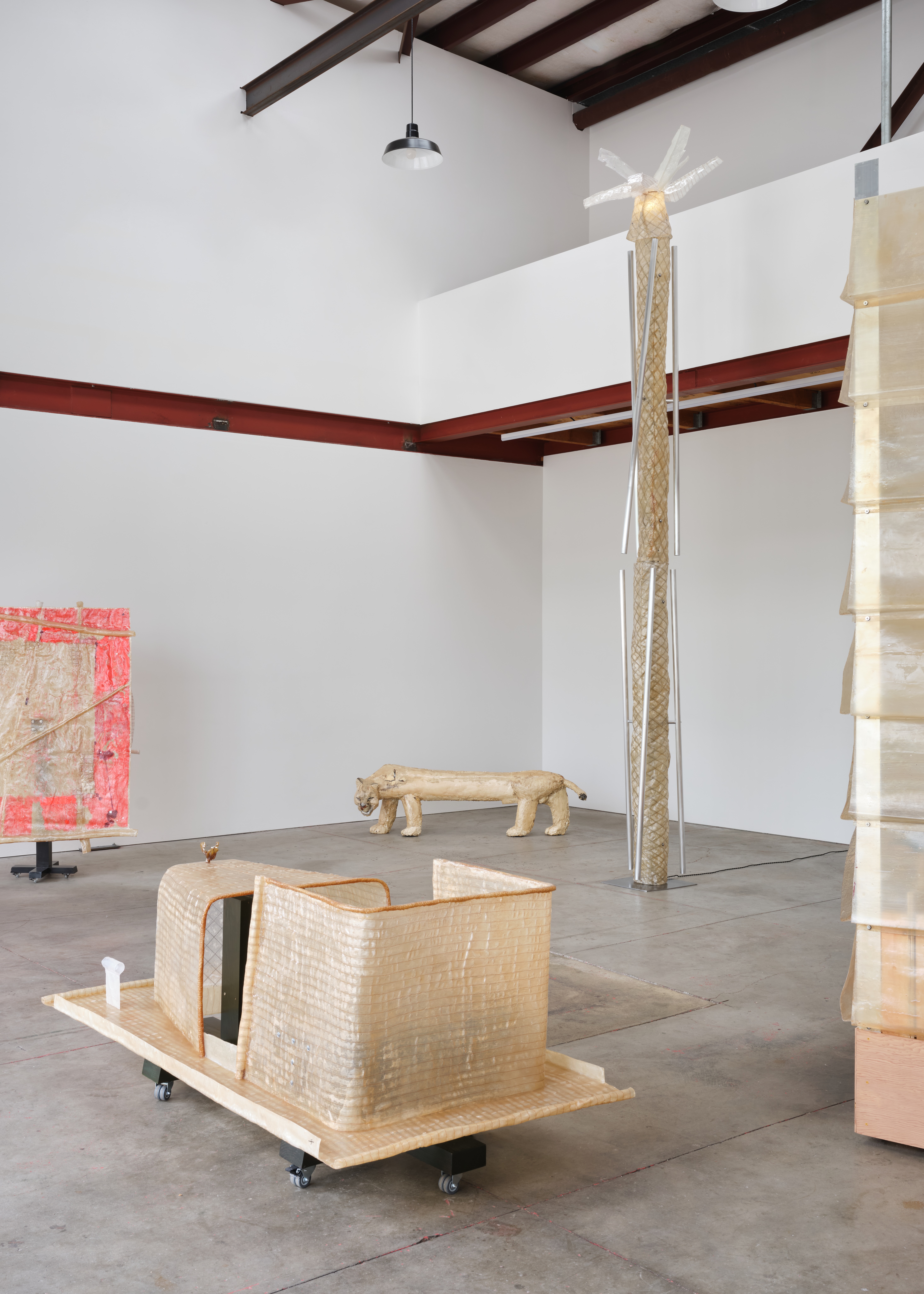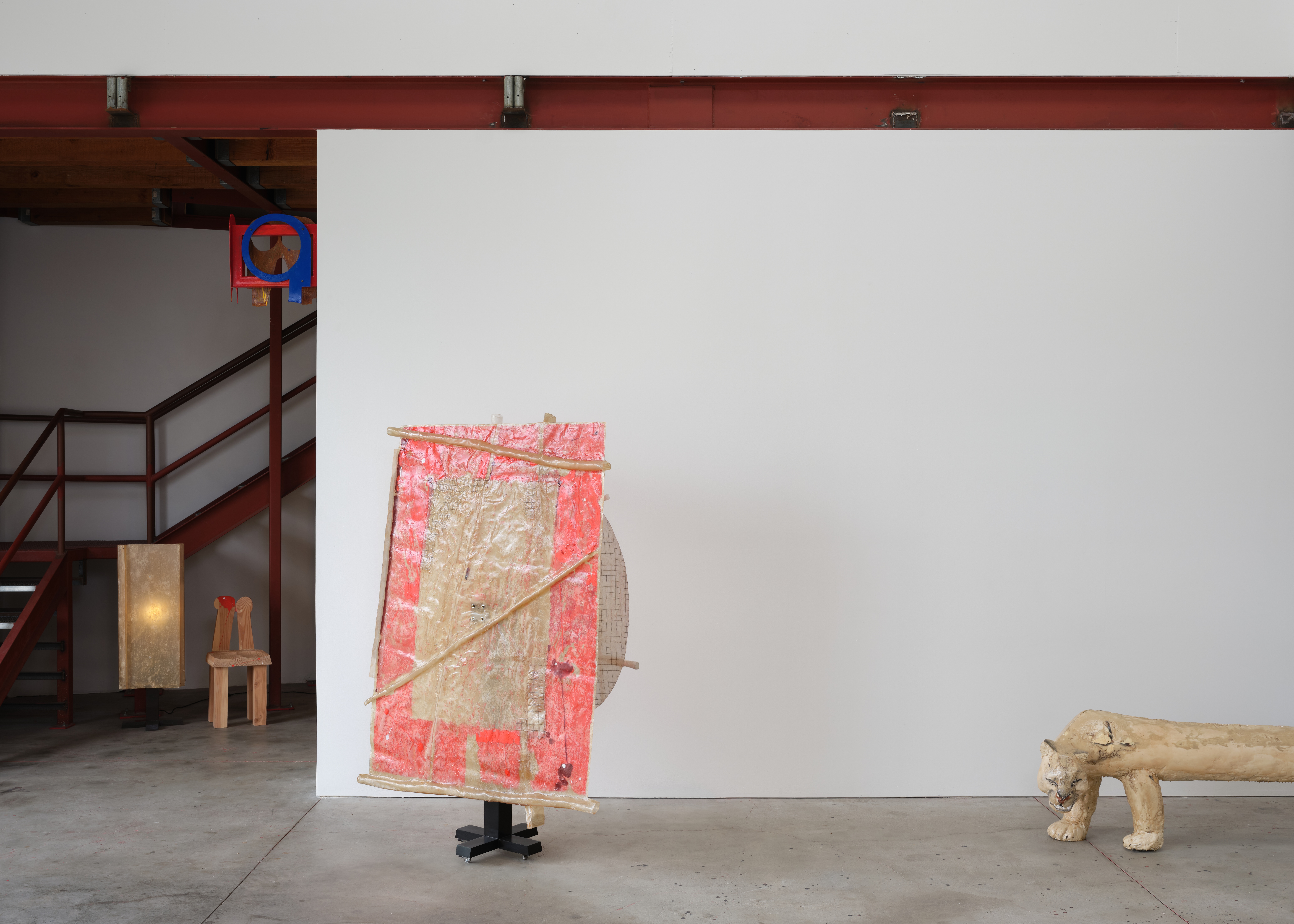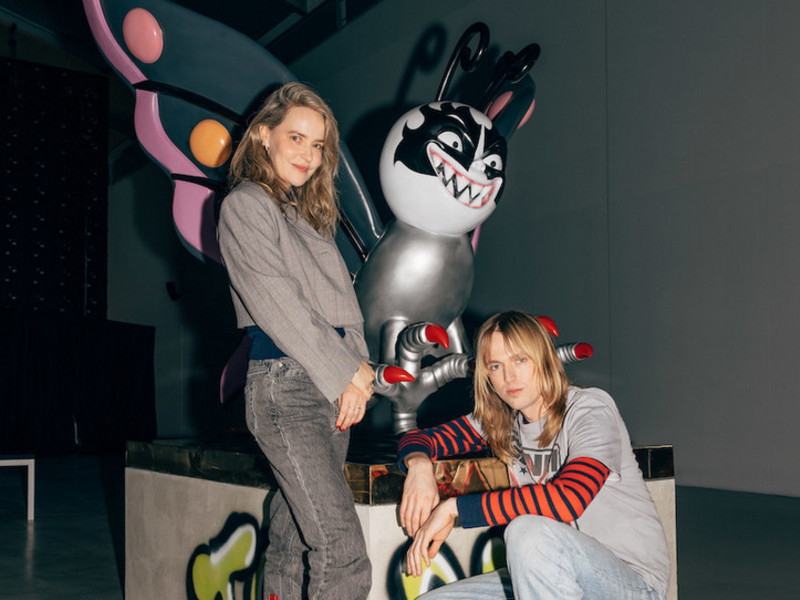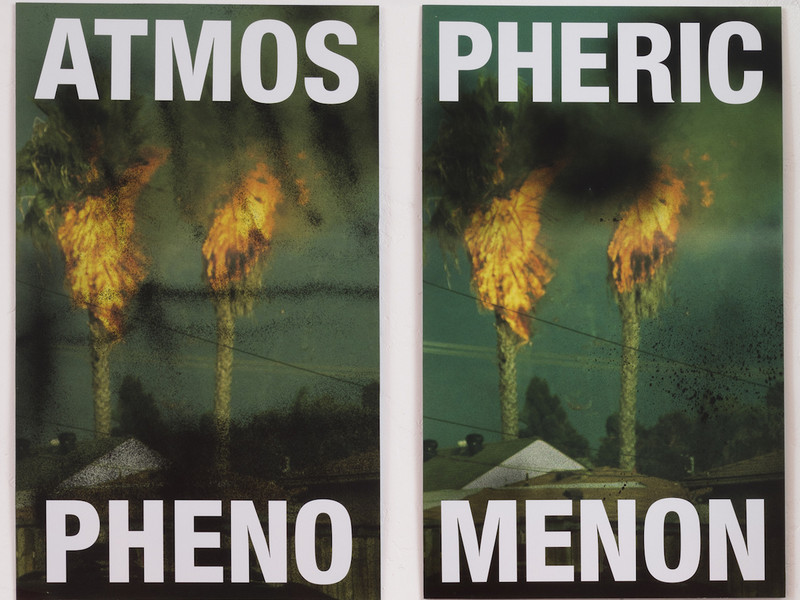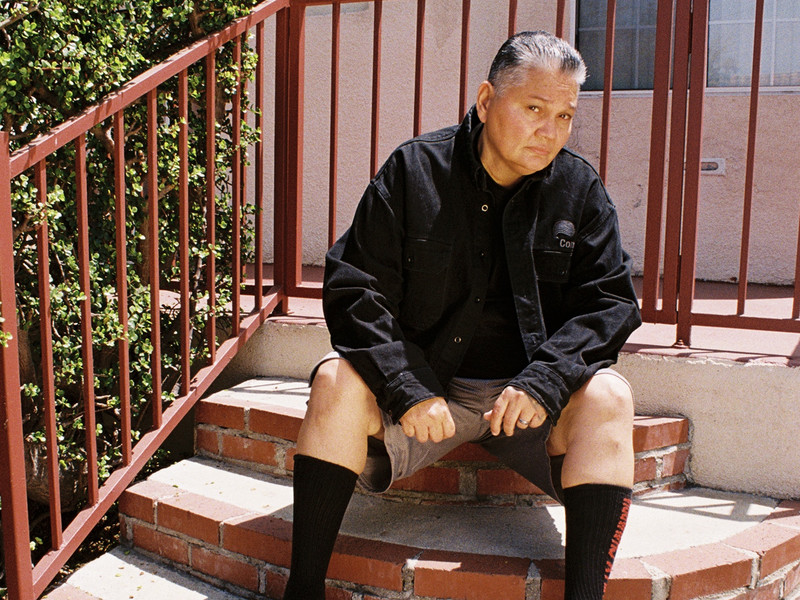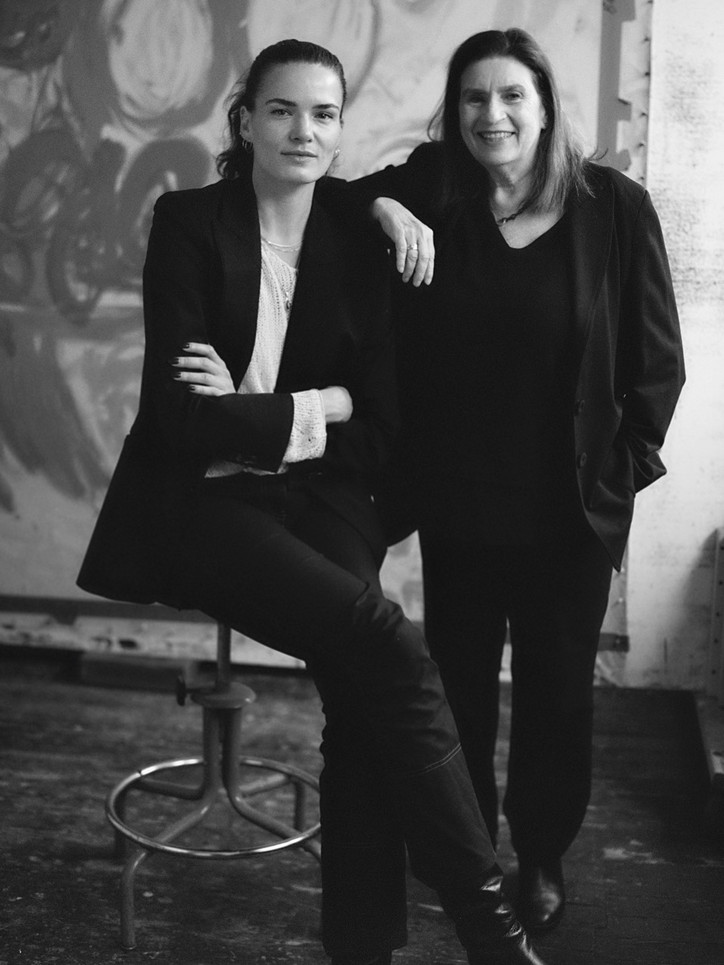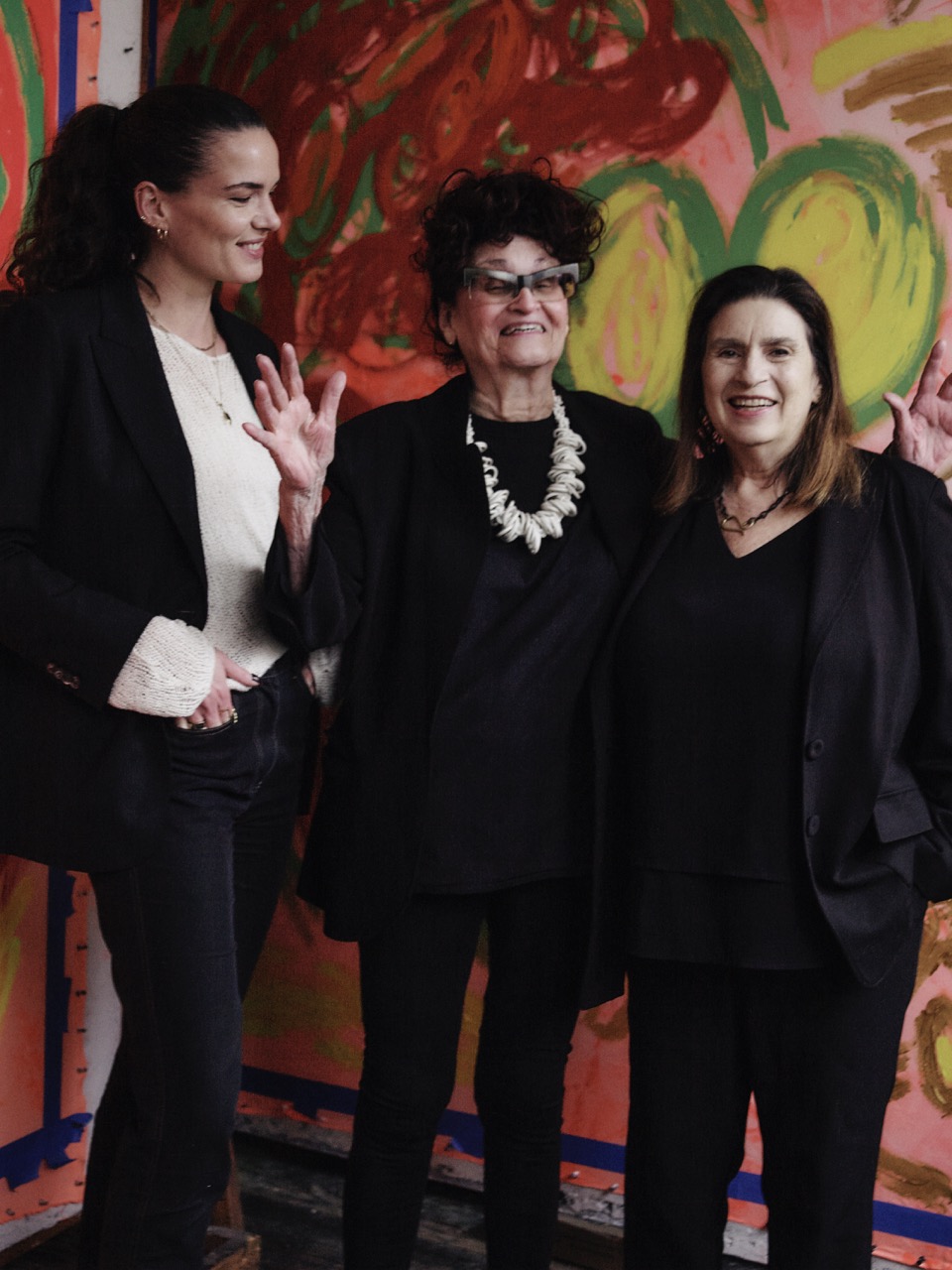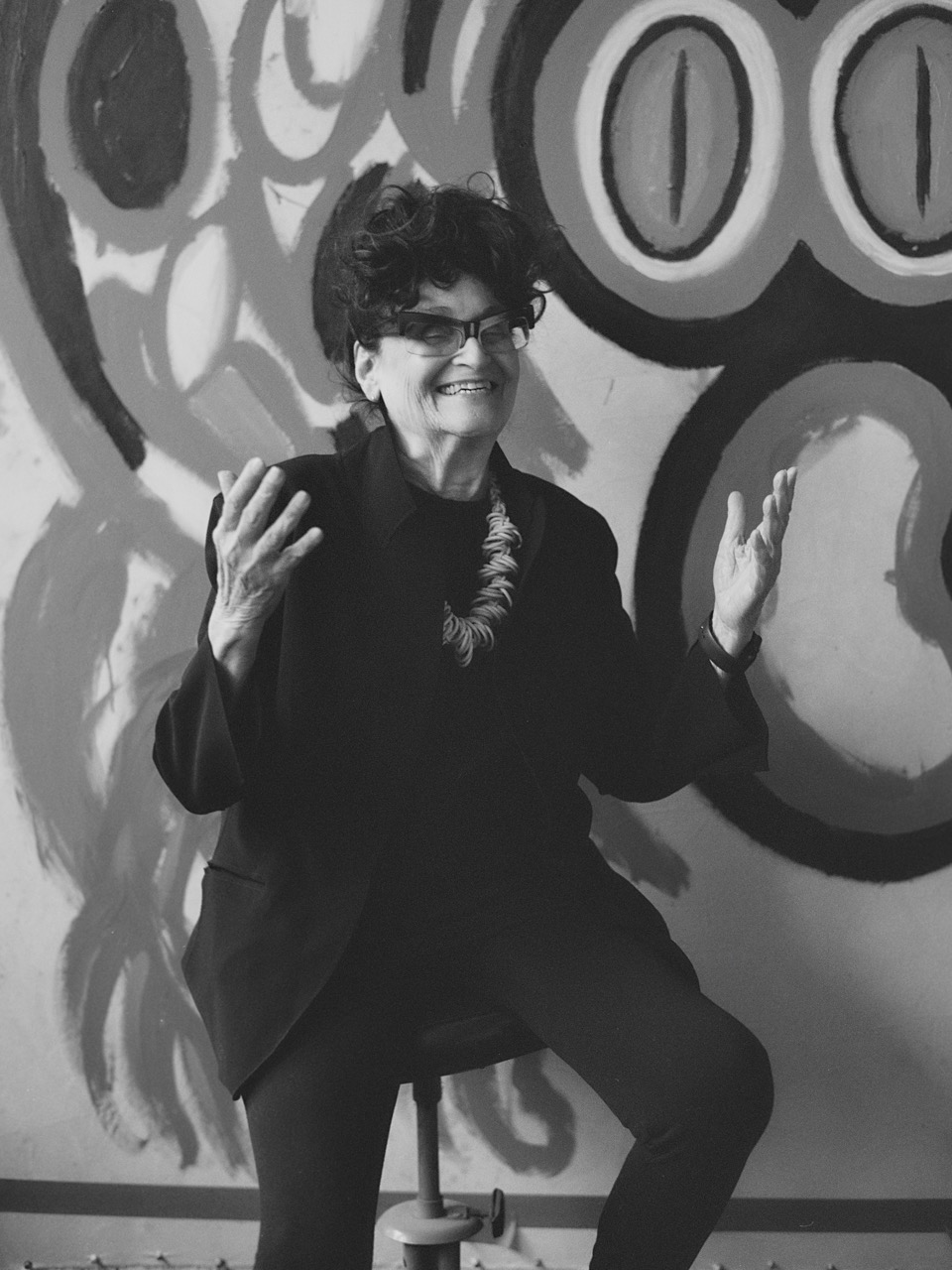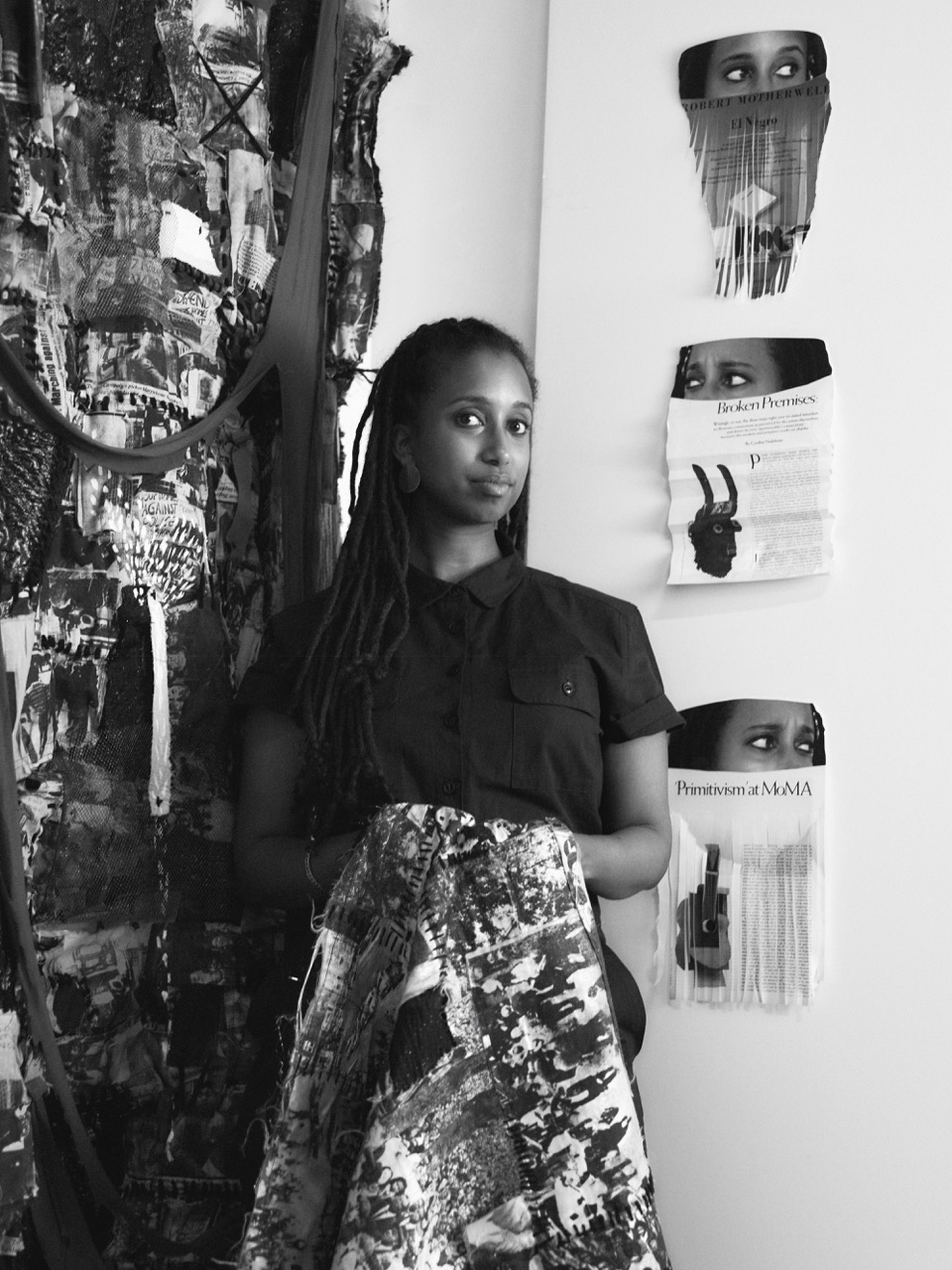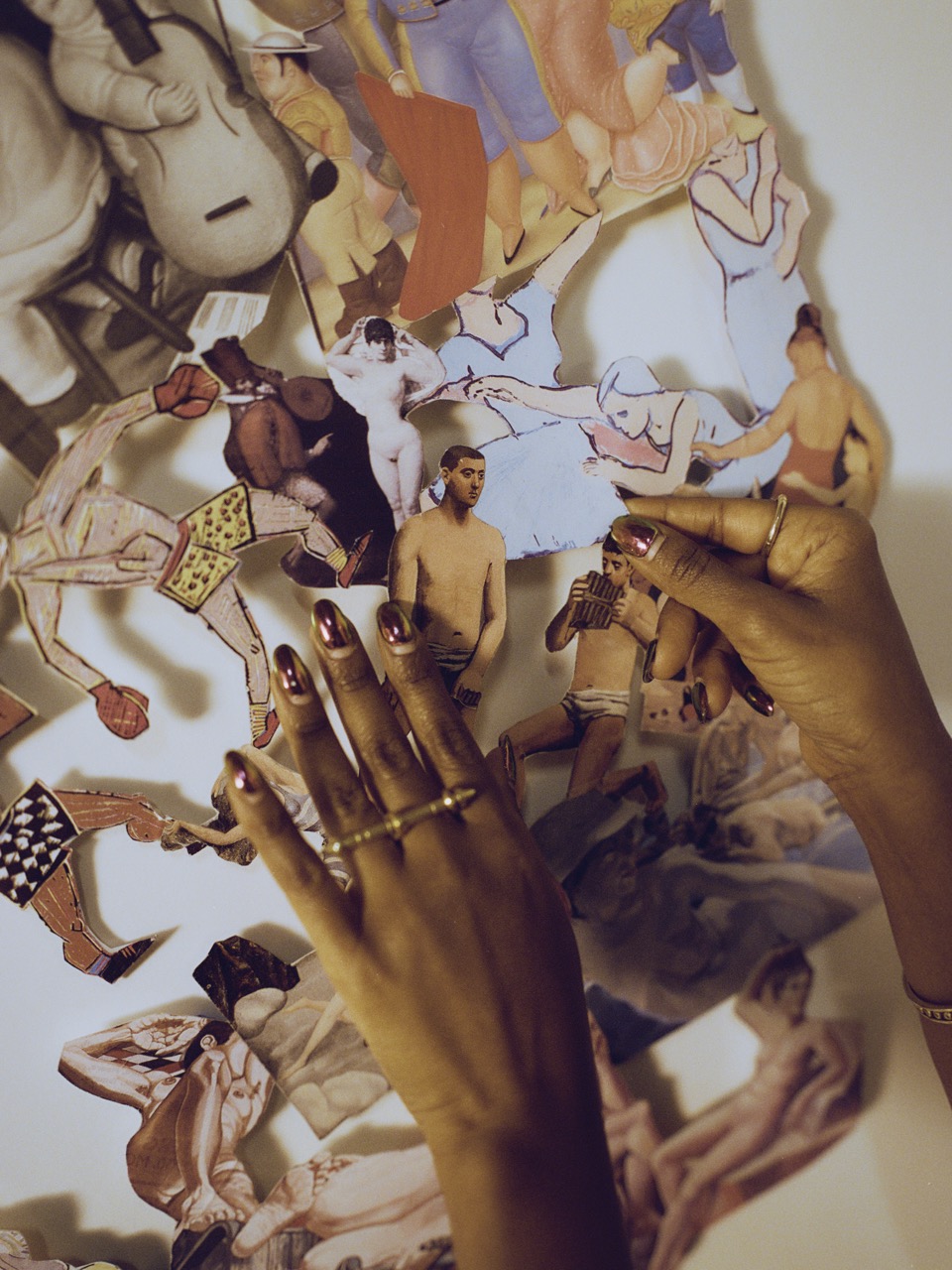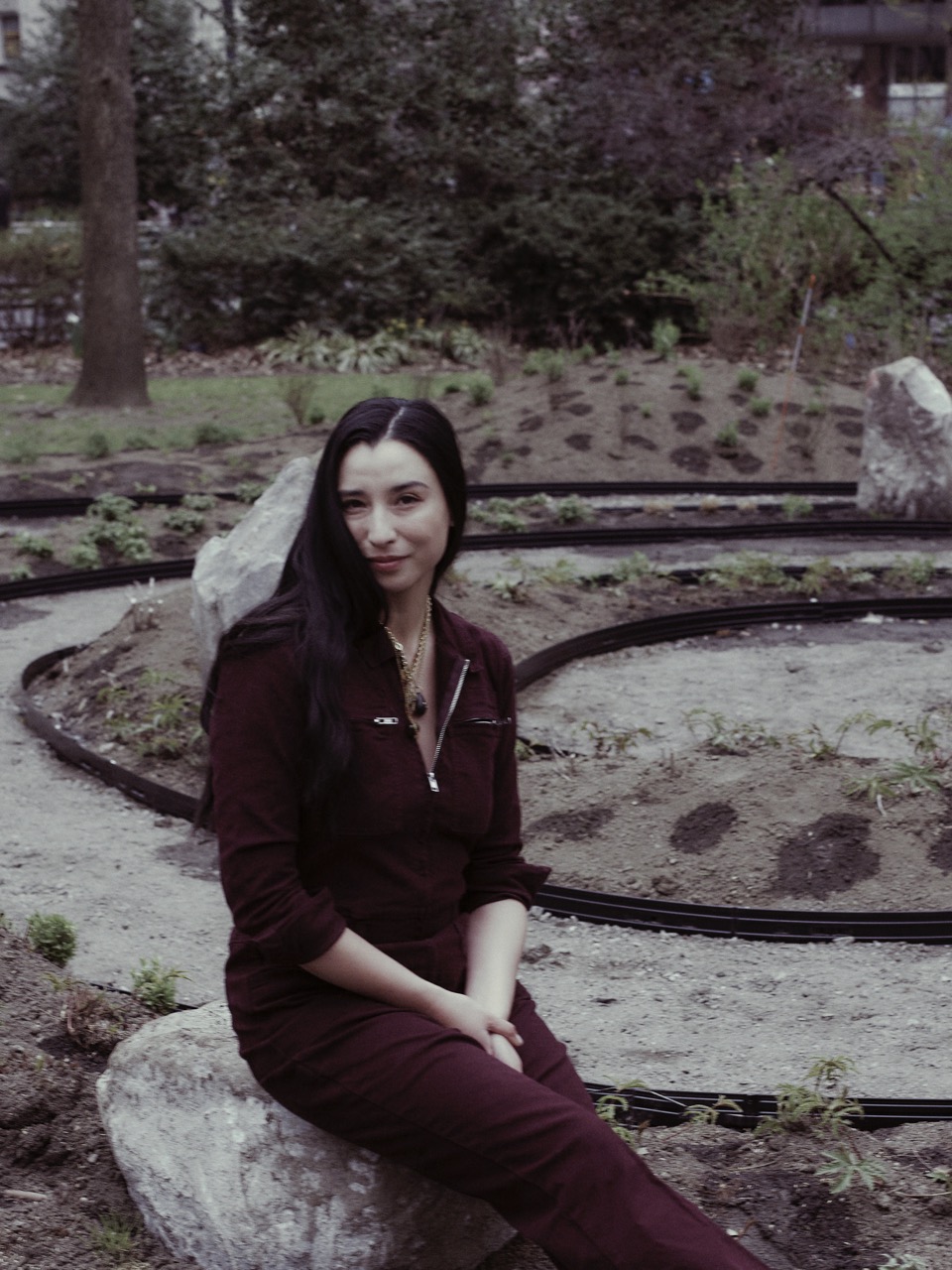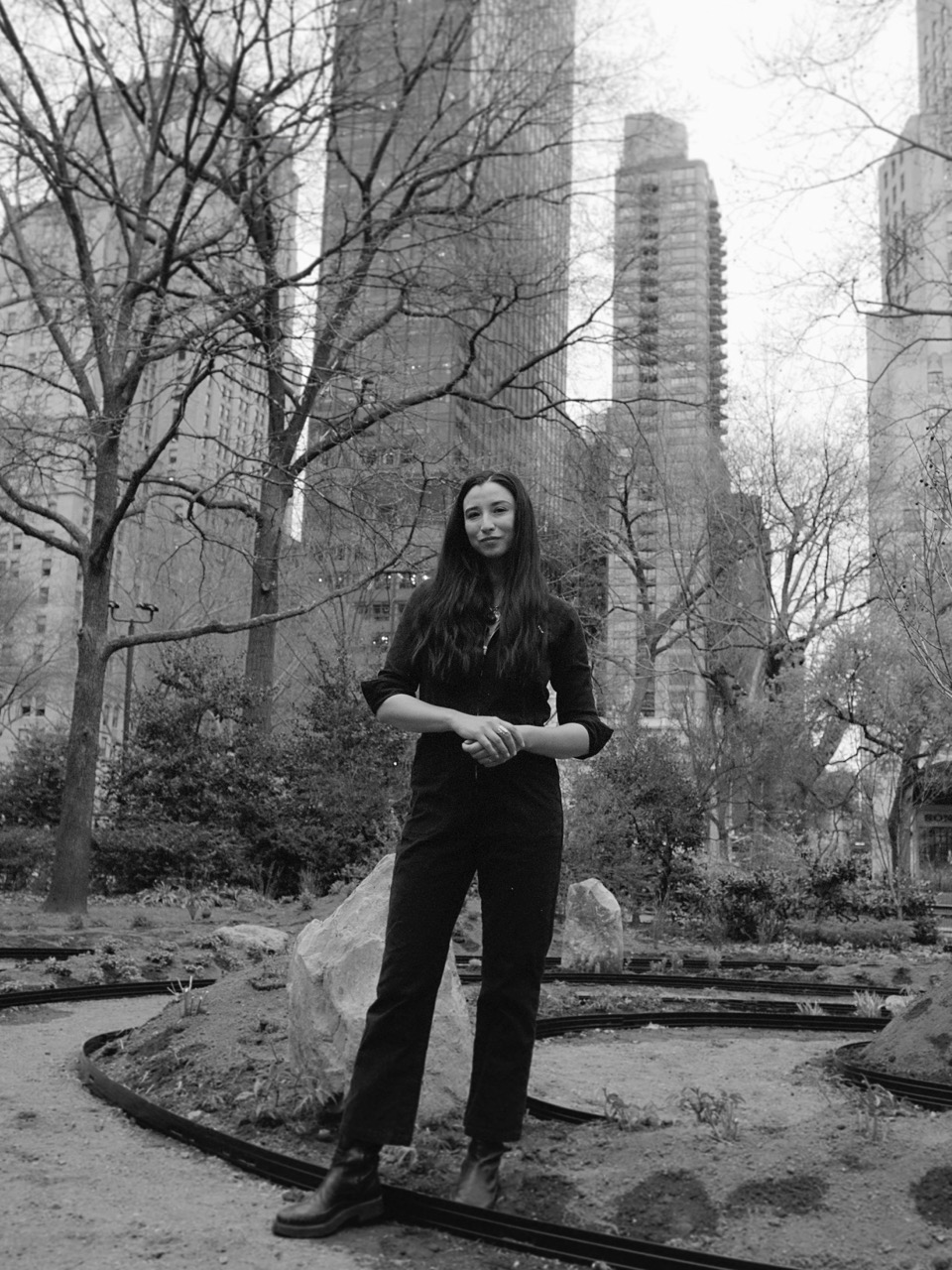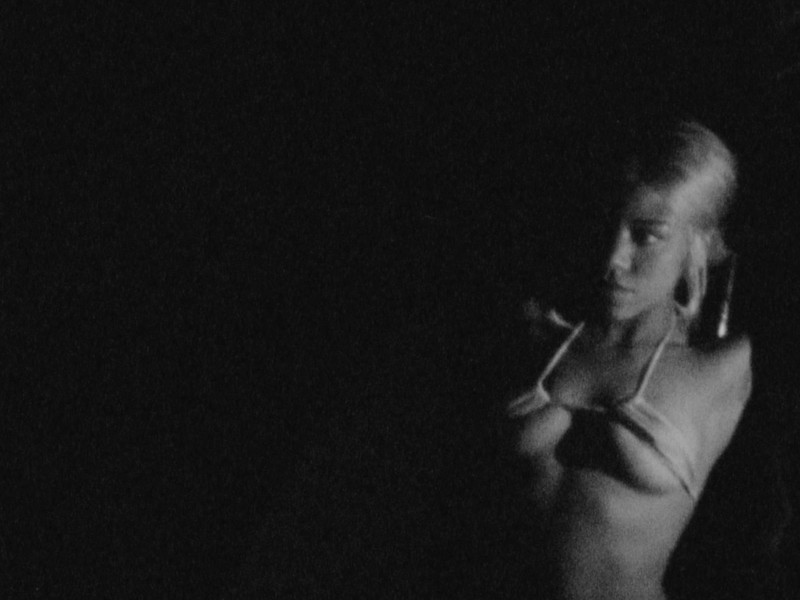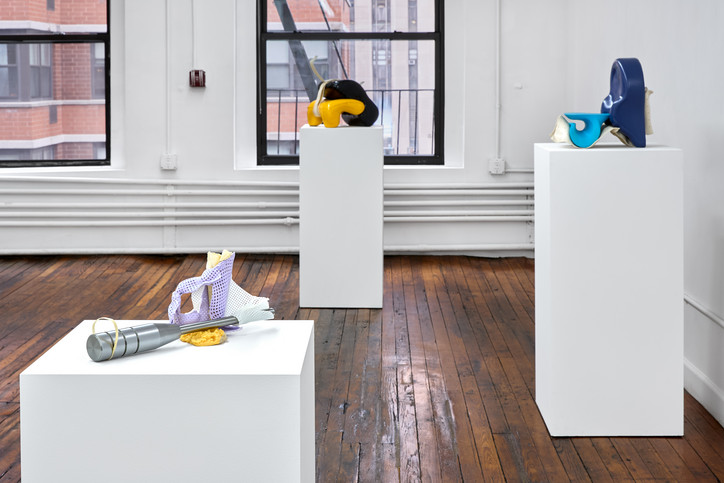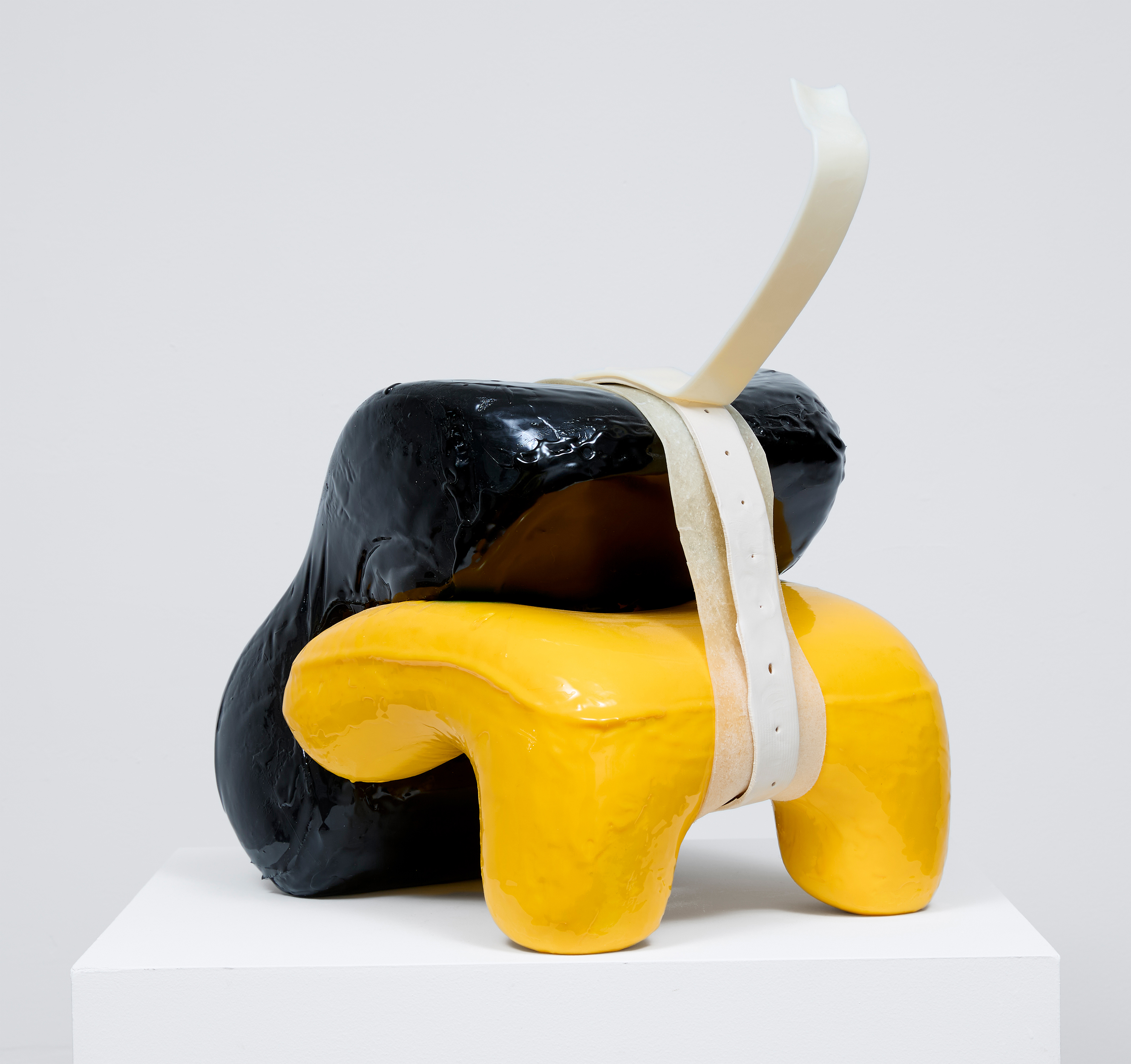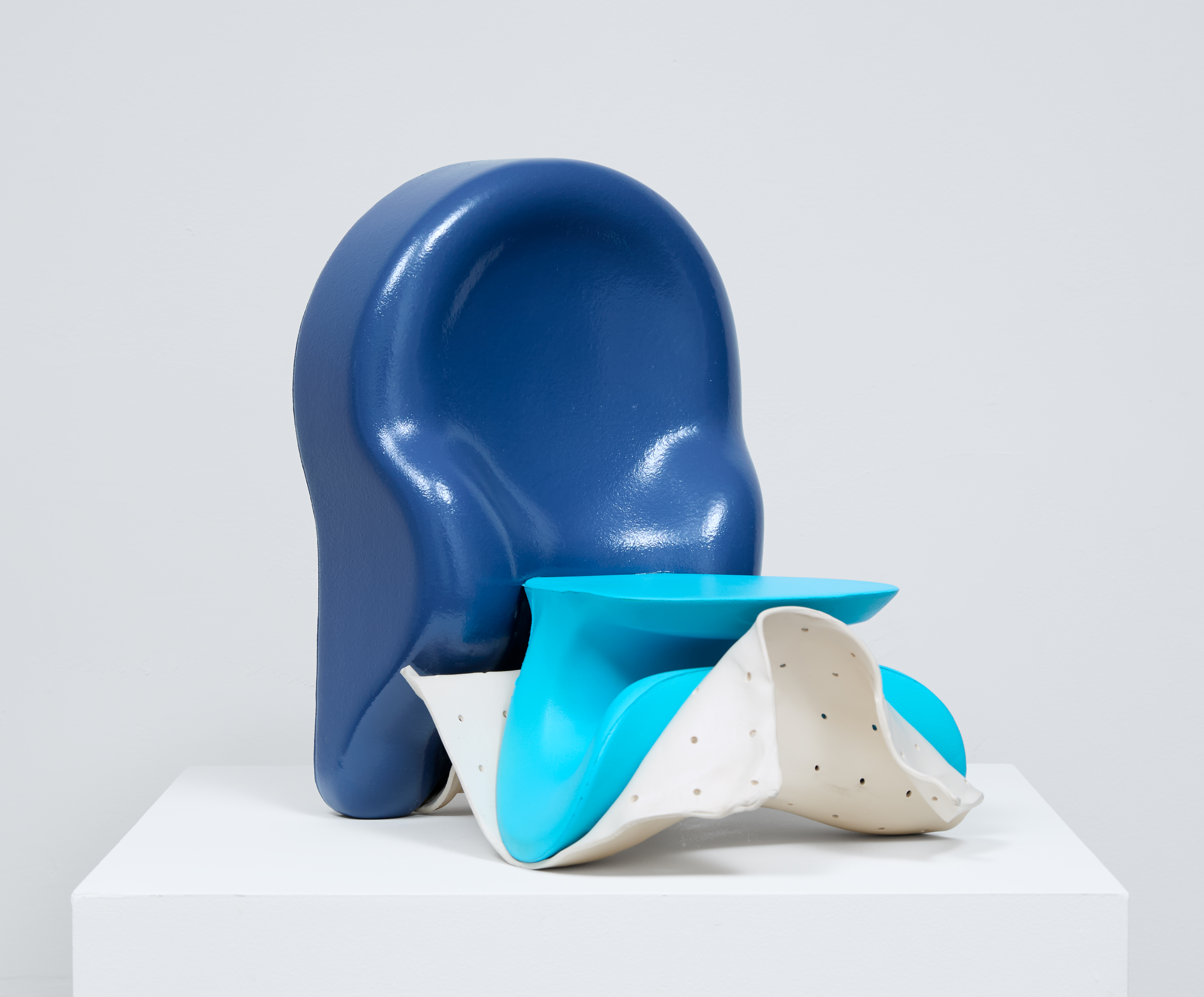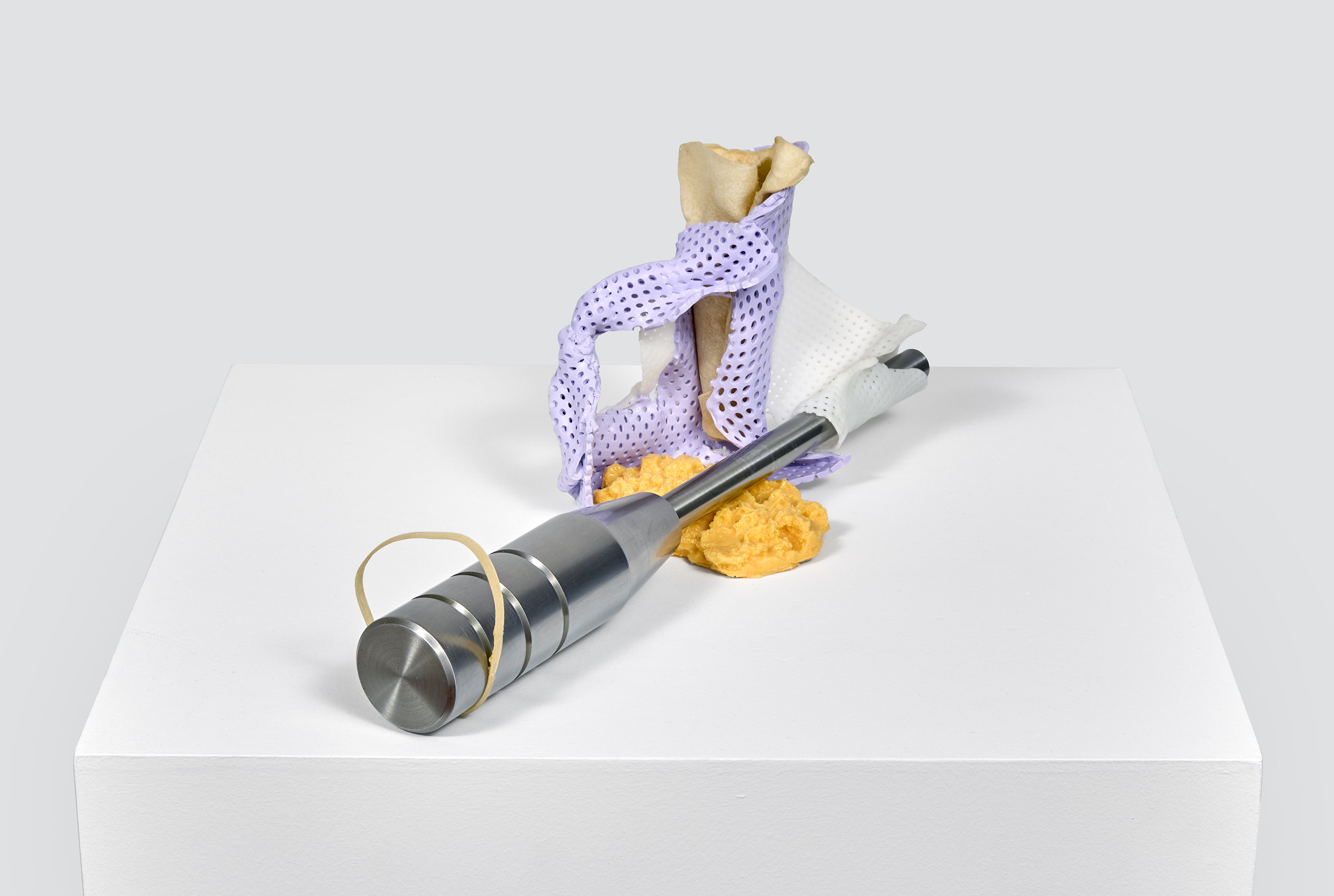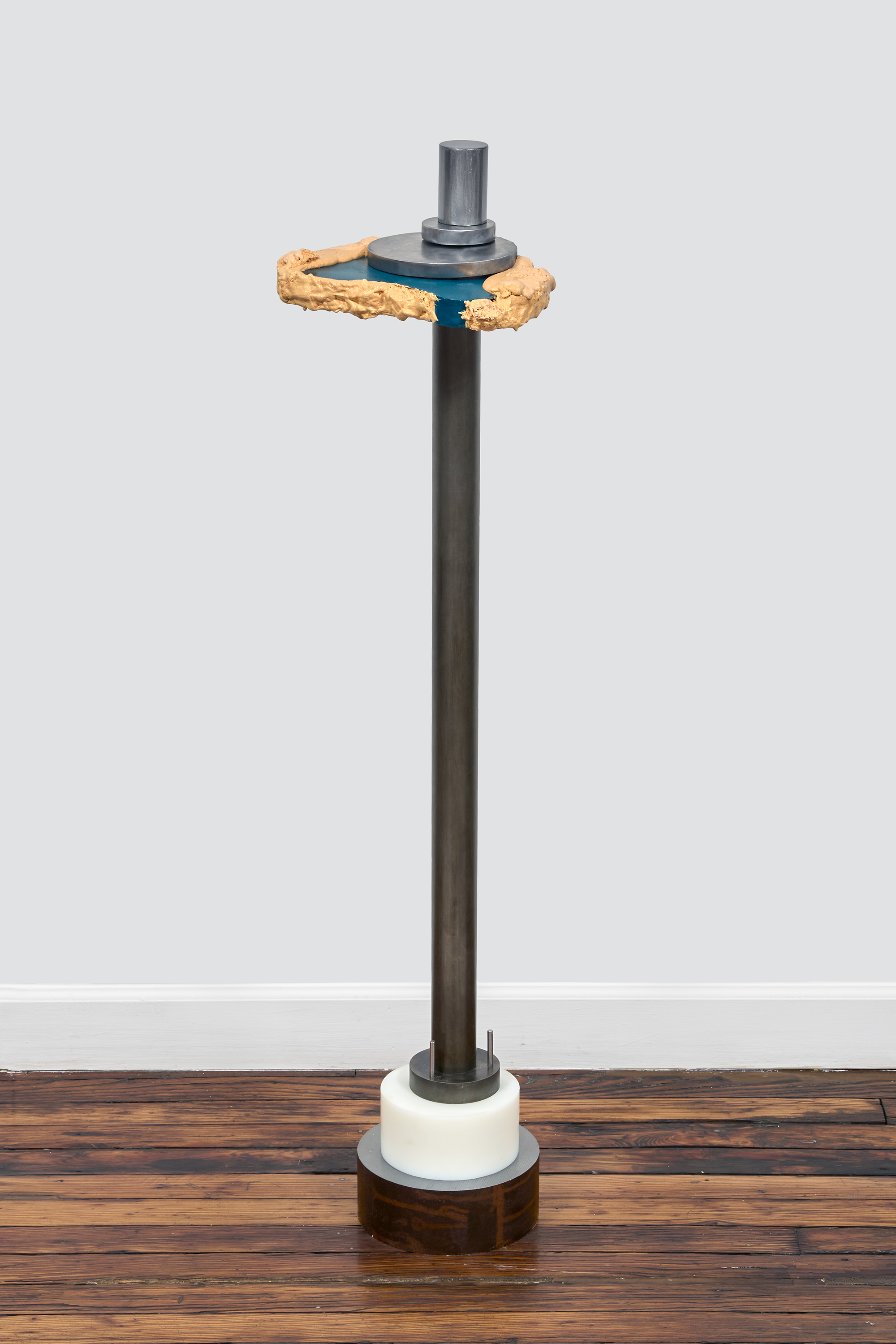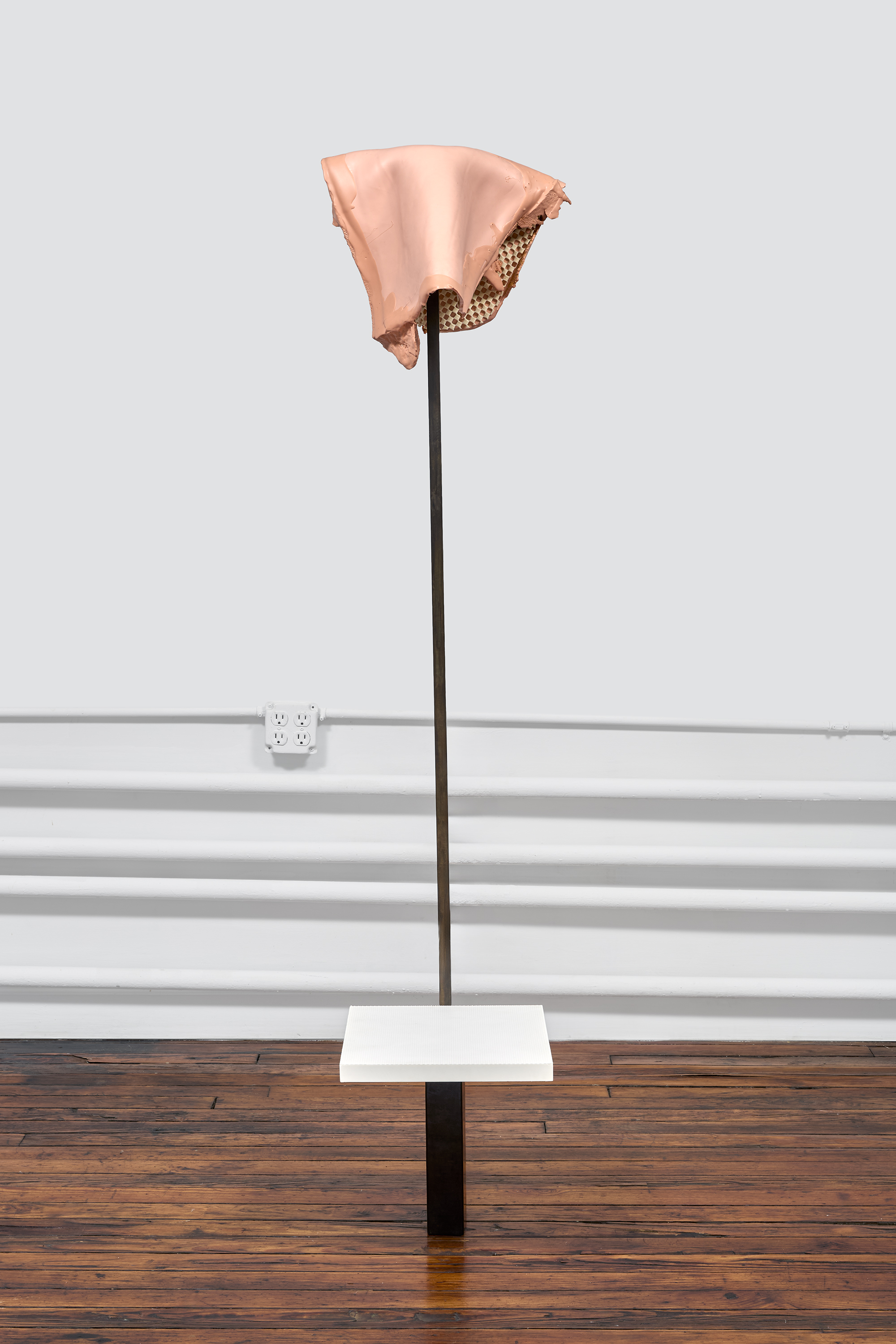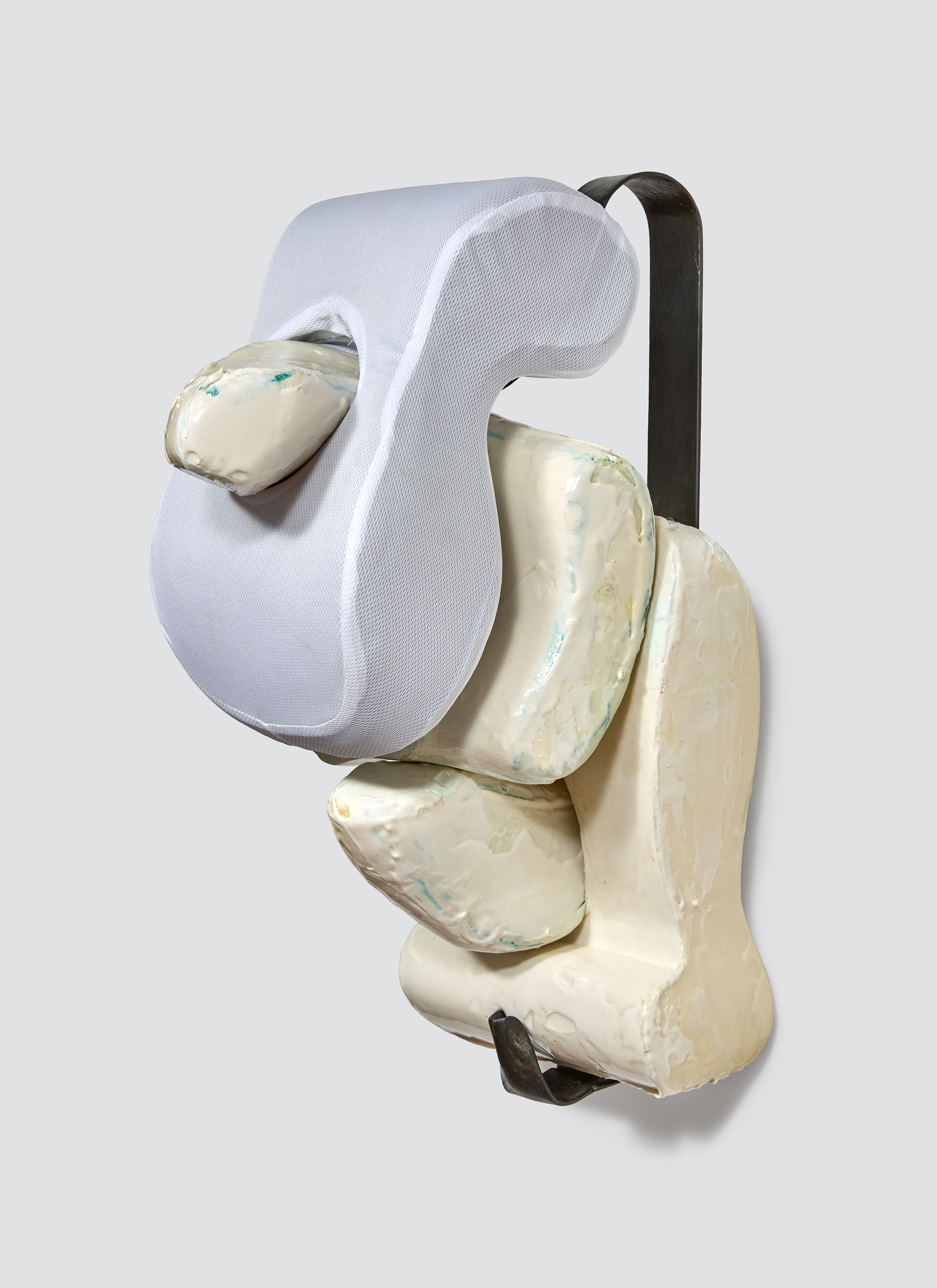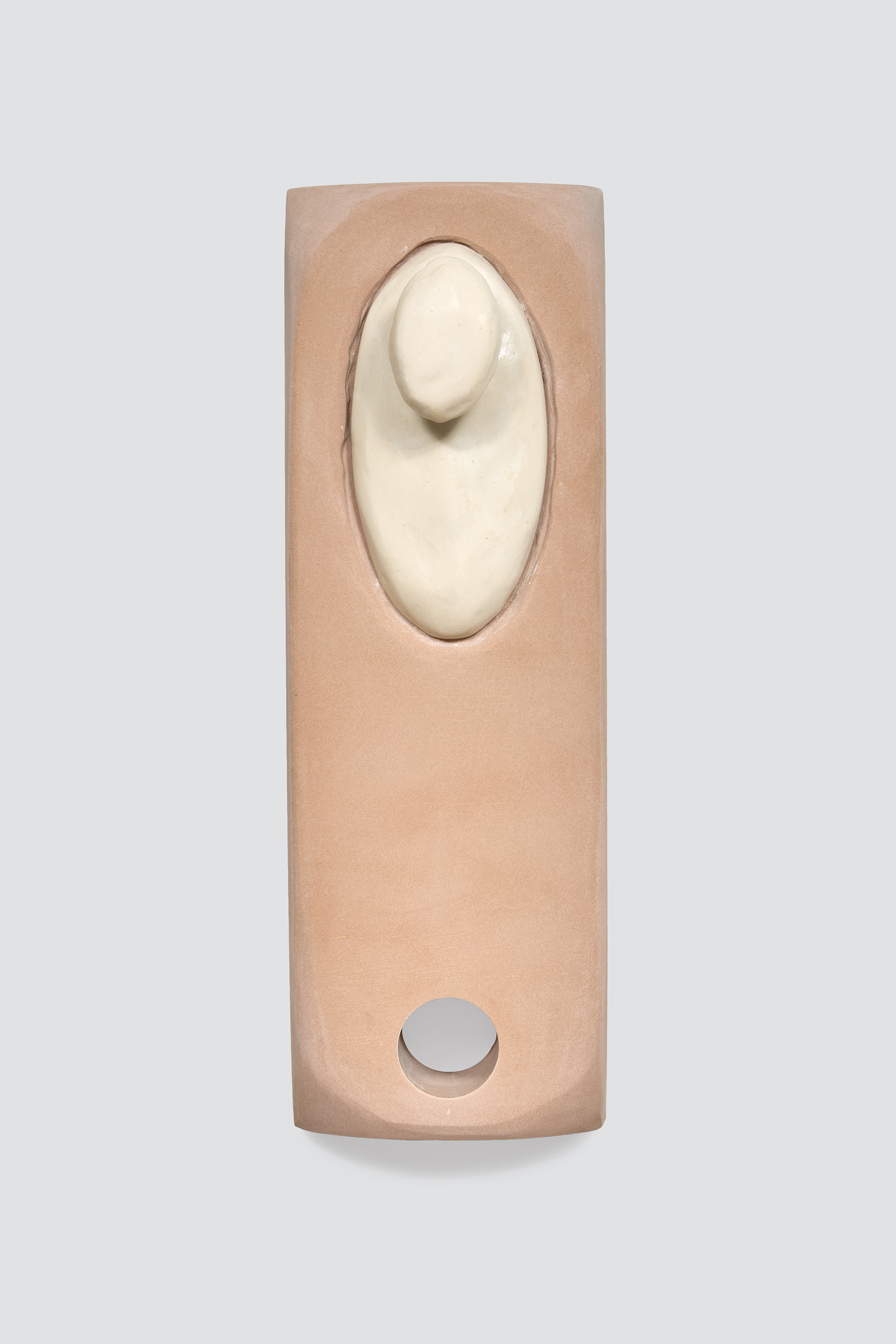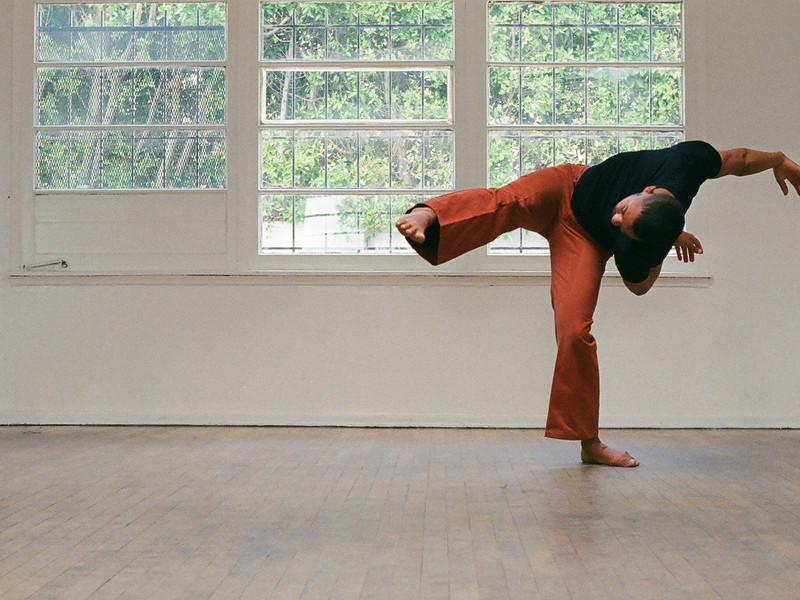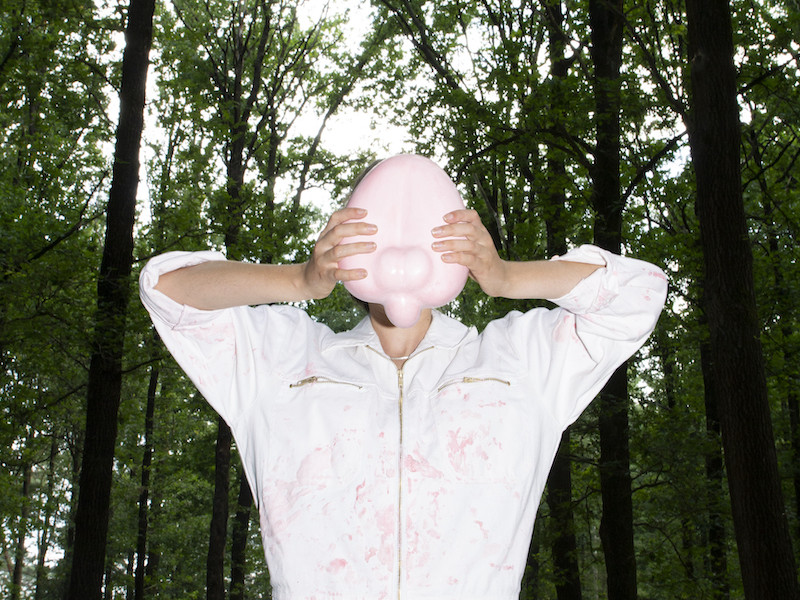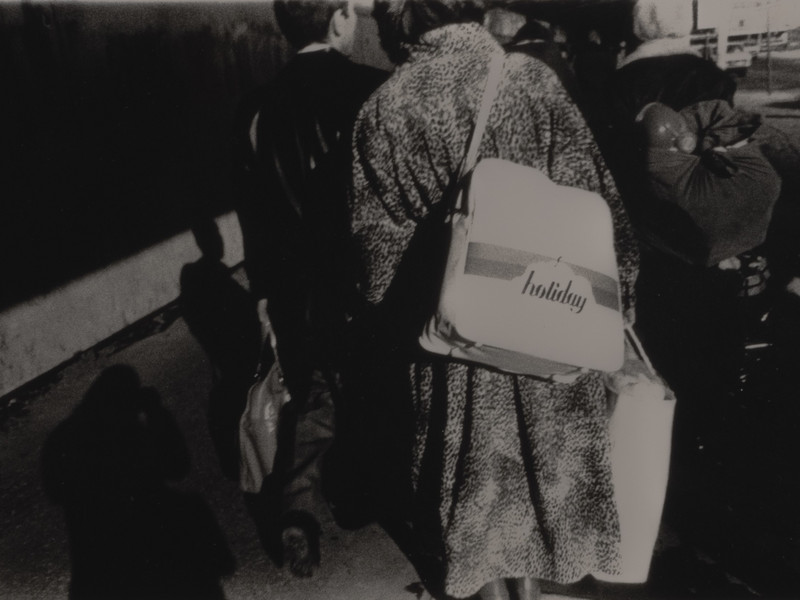Canon
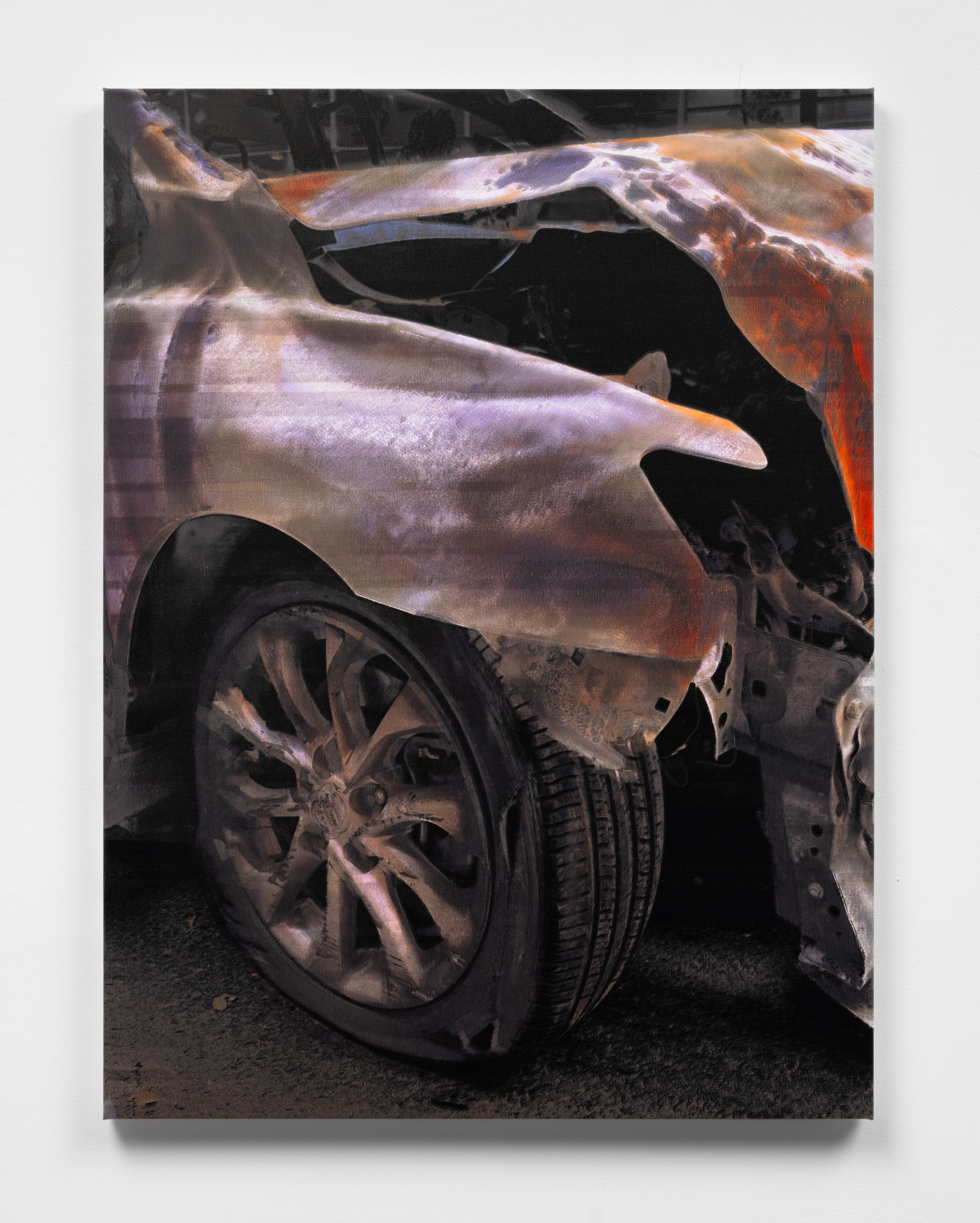
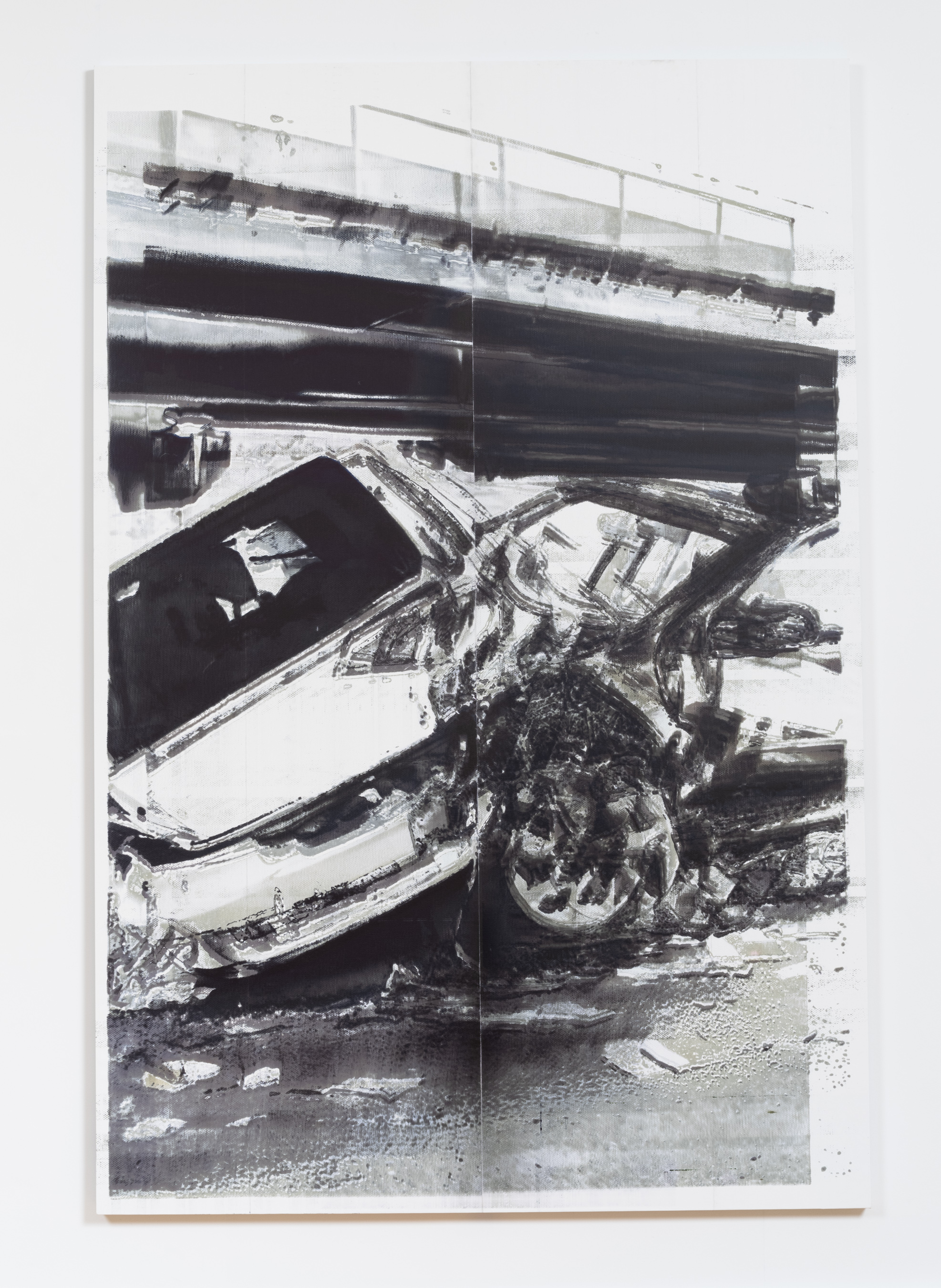
Thomas Blair, Crashed Car (Flat)
White Car Crash, 2024. Courtesy of the artist and Kapp Kapp.
Upon entering the show, the viewer meets Blair’s Crashed Car (Flat) (2024), a cropped snapshot of a wrecked vehicle, doused with splashes of violet and rust on its body. Upon closer examination, the image feels unstable or uncanny, not quite hand painted but also not entirely photographic. This effect of image hybridity epitomizes Blair's inkjet paintings — depicting generated images of car crashes (an overt Warholian homage to the Death & Disaster series), they interrogate how the feeling of a painterly moment can be manufactured in an iterative negotiation between human and machine.
In his towering White Car Crash (2024), layers of ink appear to vibrate and bleed into one another, an indication of Blair’s multistep process of producing images in AI, slicing them into layers, then repeatedly running each layer on canvas through a printer. The result is a reverse engineered painting — Blair’s approximation of a human touch via machine achieves, paradoxically, a potent expressiveness.
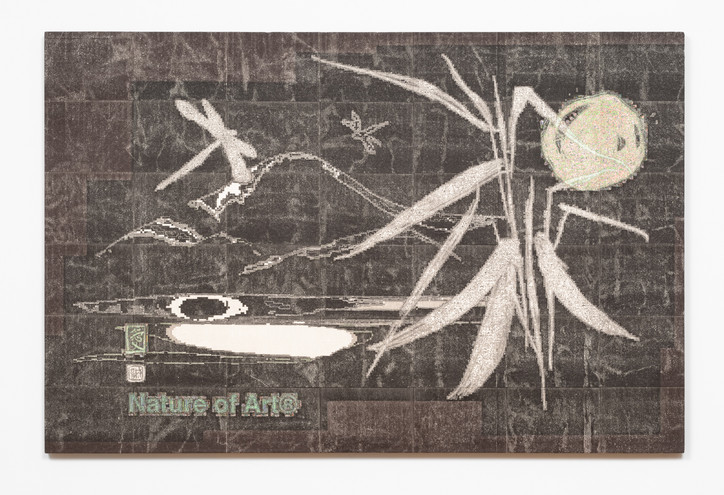
Kunning Huang, Untitled (nature of art), 2024. Courtesy of the artist and Kapp Kapp.
In Huang’s answer to the “problem,” his referential strategy summons the history of Chinese imagery and rice paper, attaining a lyrical balance between past and present. In the anterior of the gallery, his piece titled Untitled (nature of art) (2024) broadcasts the tongue in cheek thematic tagline “Nature of Art,” alongside imagery lifted from an early Qing Dynasty painting manuscript — a graceful pond scene, complete with grass stalks and dragonflies. But the objects and their surroundings seem tonally inverted and actively glitching, indicating Huang’s treatment of rounds of image processing in the preparation stages of his practice. Quilted in tiles, each panel of the work undergoes an intensive process: a specially rigged Canon printer impresses onto an acrylic sheet and thereafter, Huang rubs the printed ink directly onto rice paper, continuing a technique performed in ancient Chinese woodblock printing. The porous nature of the material causes the CMY ink colors to separate, culminating in a pleasurably pixelated texture. In this manner, Huang’s historically enriched approach demystifies present day conceptual concerns and technologies as existing within deeper lineages.
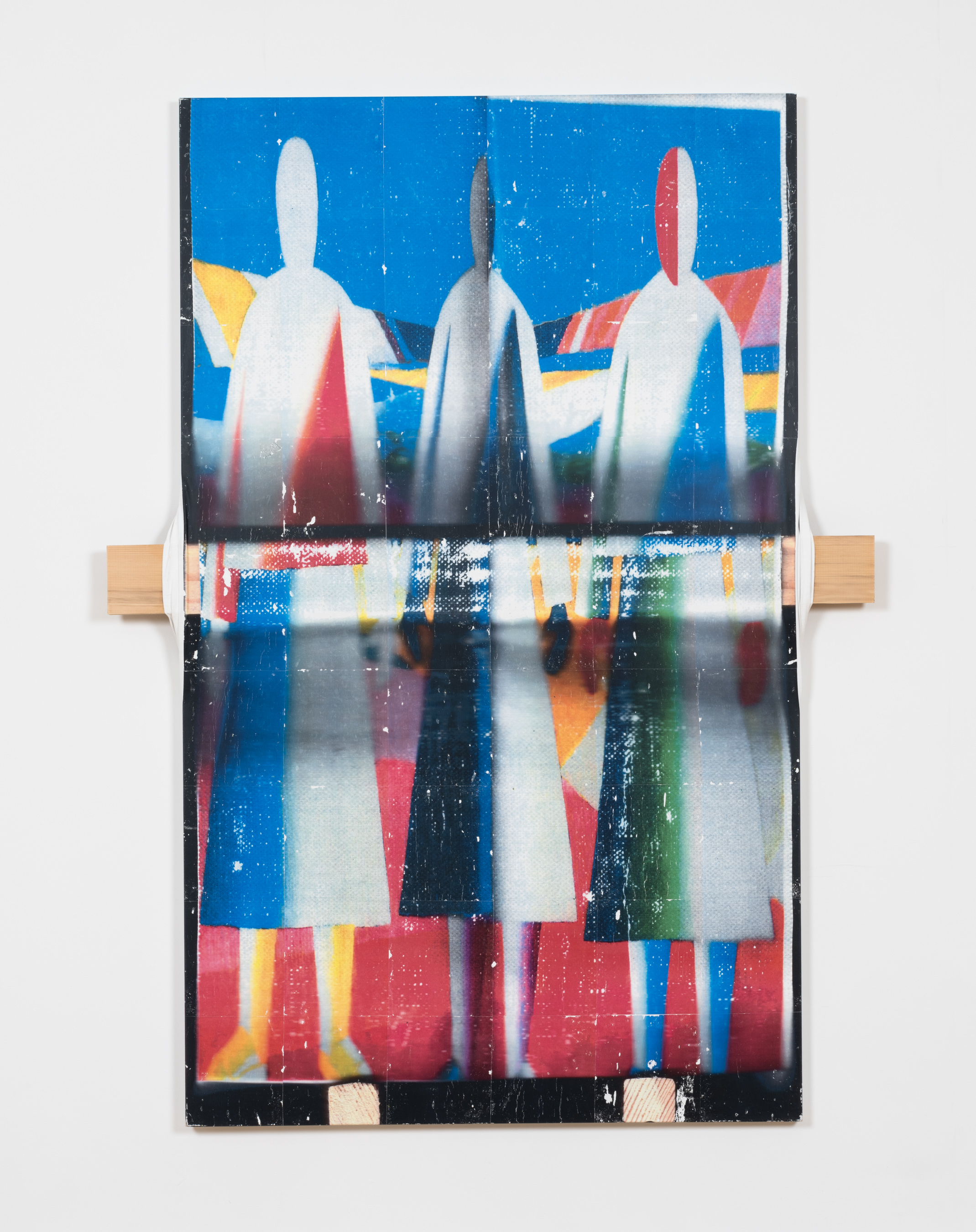
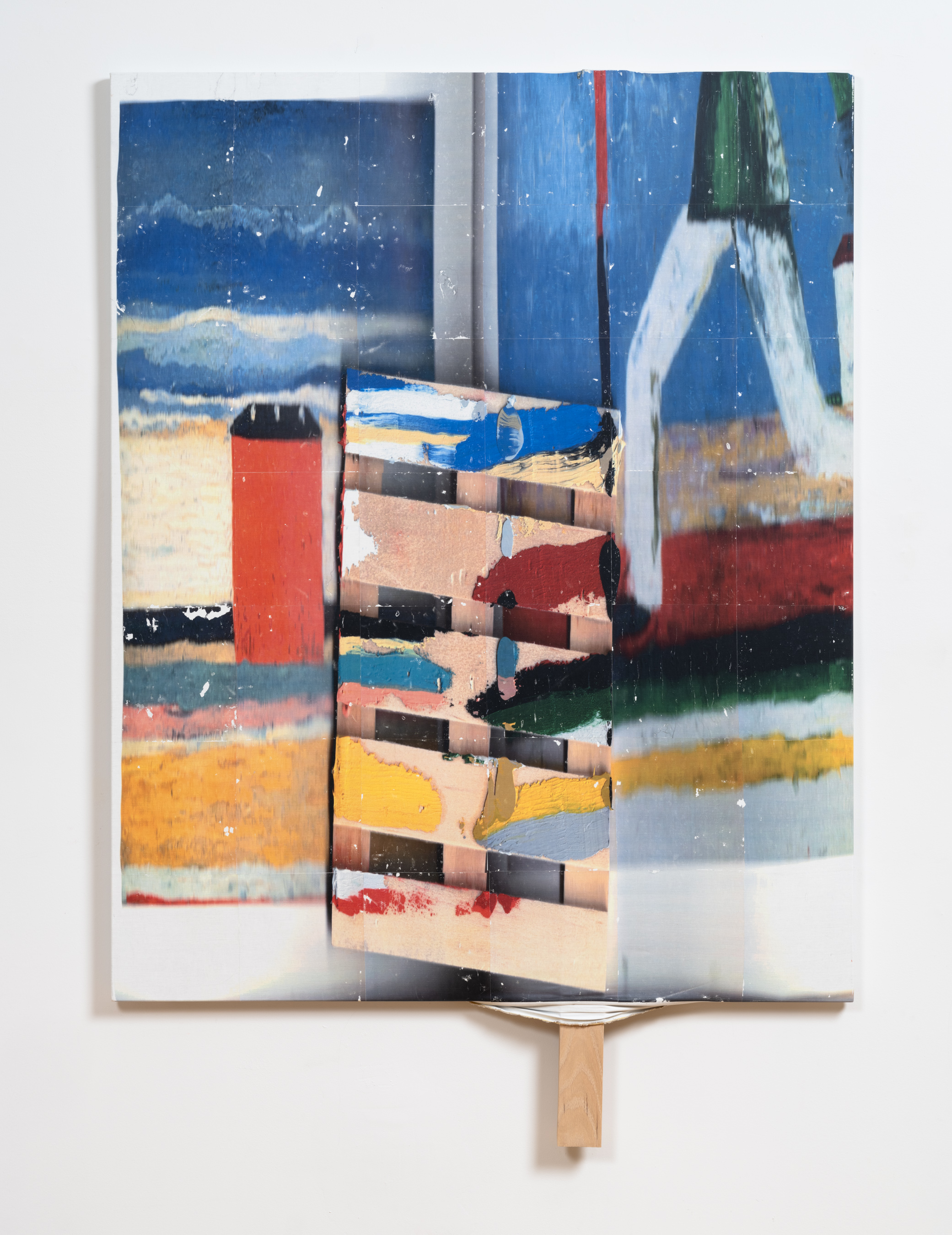
Waseem Nafisi, Bar Peasants (after Malevich), 2023
Second Impressions (after Malevich), 2023. Courtesy of the artist and Kapp Kapp.
Nafisi similarly leads with an art historical reference — the paintings of Kazimir Malevich — in his playful interventions into the thrust of post-modernity. In Bar Peasants (2023), a distorted copy of a brightly colored Malevich painting is bisected by a stretcher bar that literally juts out from either side of the canvas, while also appearing to nudge forward a horizontal sliver of the image — yet this tromp-l'œil unit remains physically flat on the canvas. Nafisi accomplishes this effect by constructing a to-scale miniature “stretcher bar” fixed onto a page from a Malevich monograph, then photocopied and printed onto the canvas. As Malevich serves as a stand-in for the crushing sensation of art history standing on one’s shoulders, Nafisi triumphantly pierces the purified image to assert his place in the “now.”
In Second Impressions (After Malevich) (2024), he employs a similar technique of flattened physicality, in this instance introducing a hand-painted wooden feature in the foreground. True to theme, the only occurrence of paint in this exhibition of paintings is merely an image of paint. This ironic demonstration reveals a self-conscious strategy by Nafisi: the painter’s hand itself becomes an image.
It may come as no surprise that as art school peers, Blair and Huang both trained as photographers, while Nafisi studied more traditional painting — all three departed their mediums and converged in the center at technologically-driven painting practices. The culmination of these young artists’ experiments suggests that painting can trudge through the societal jungle of images and increasingly intelligent technologies of today by borrowing from the toolkit of the past — a promise that digital acceleration can, in fact, enhance the joie de vivre of making and experiencing art.
Canon is on view at Kapp Kapp, 86 Walker St 4th Floor, New York, NY 10013 until May 11, 2024
